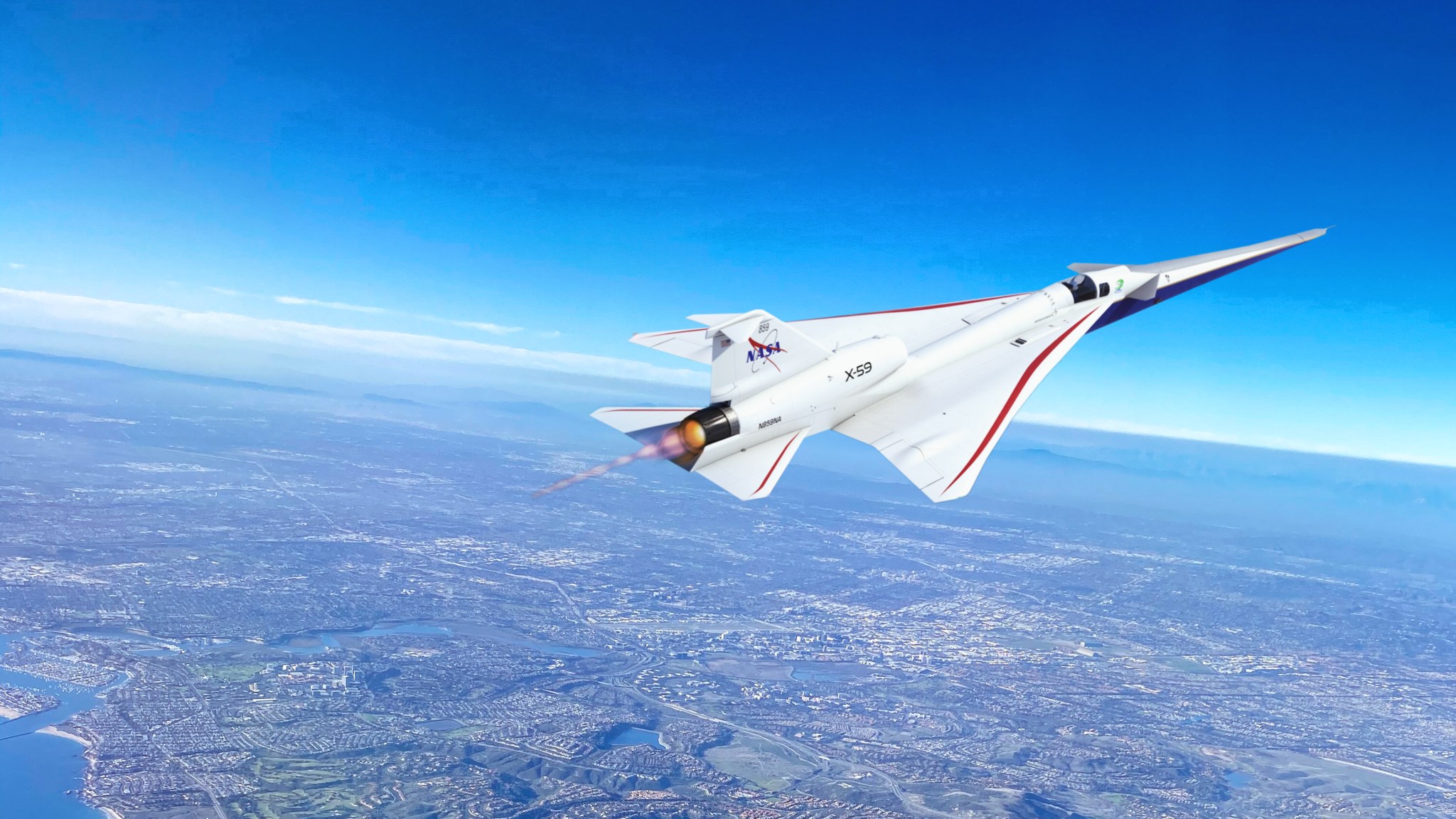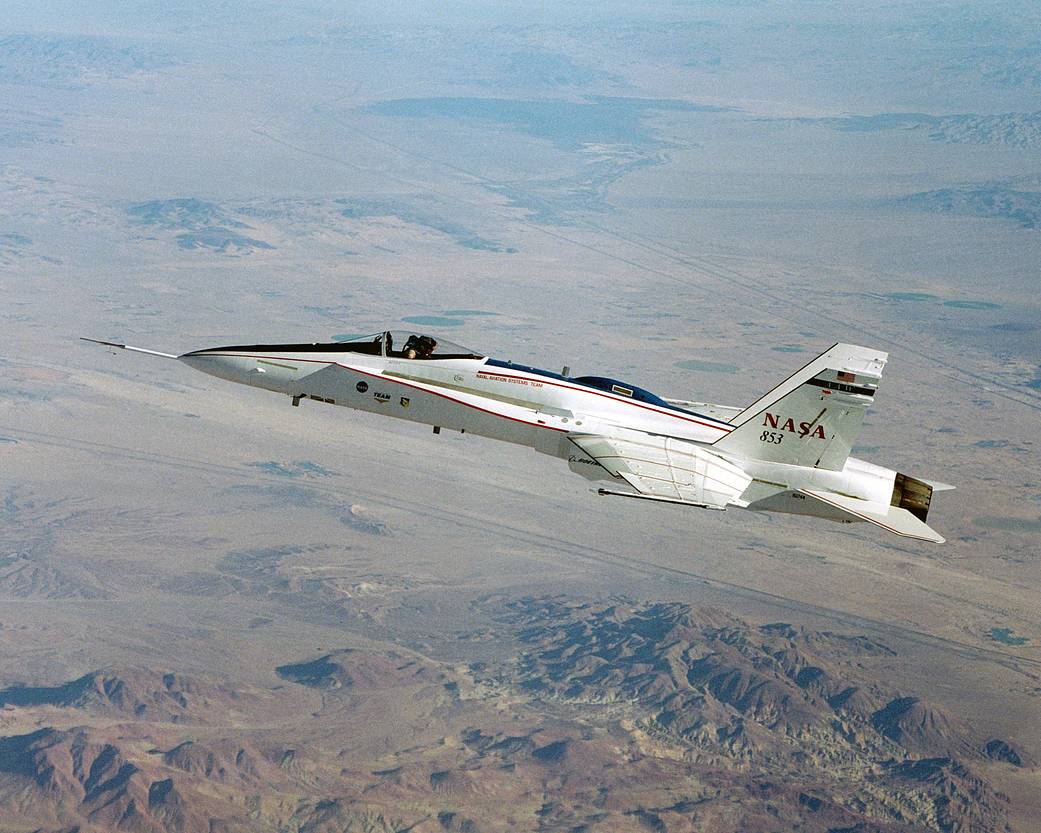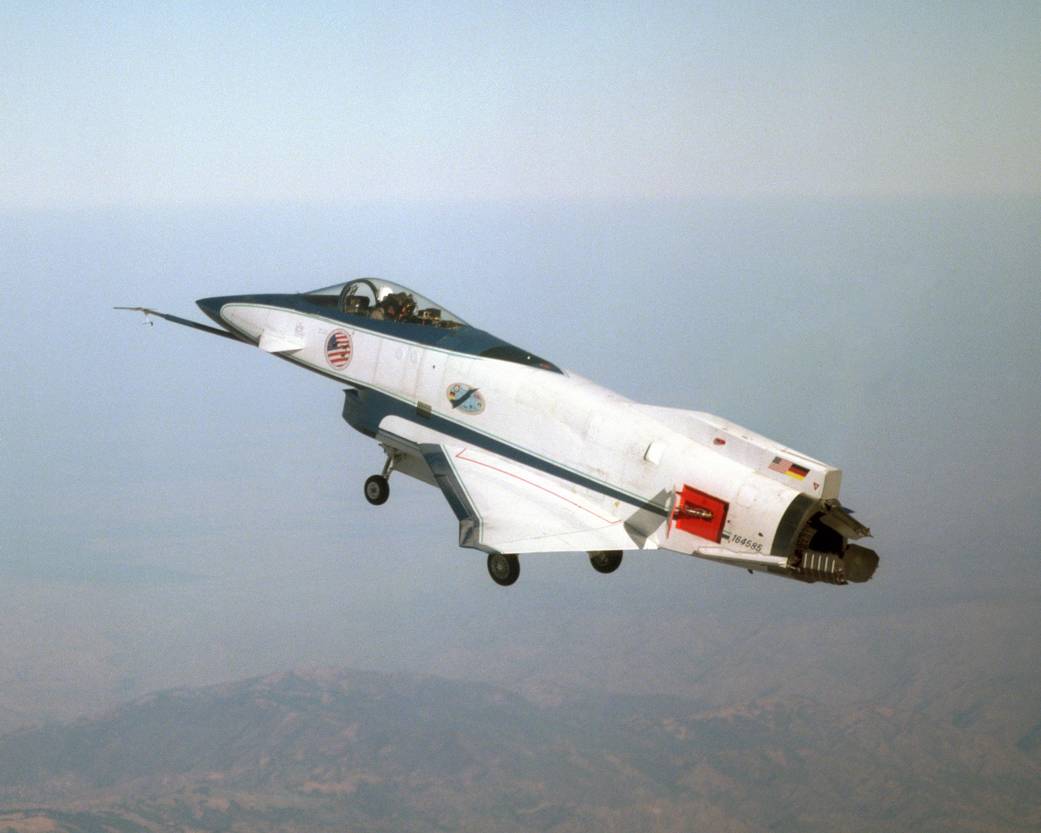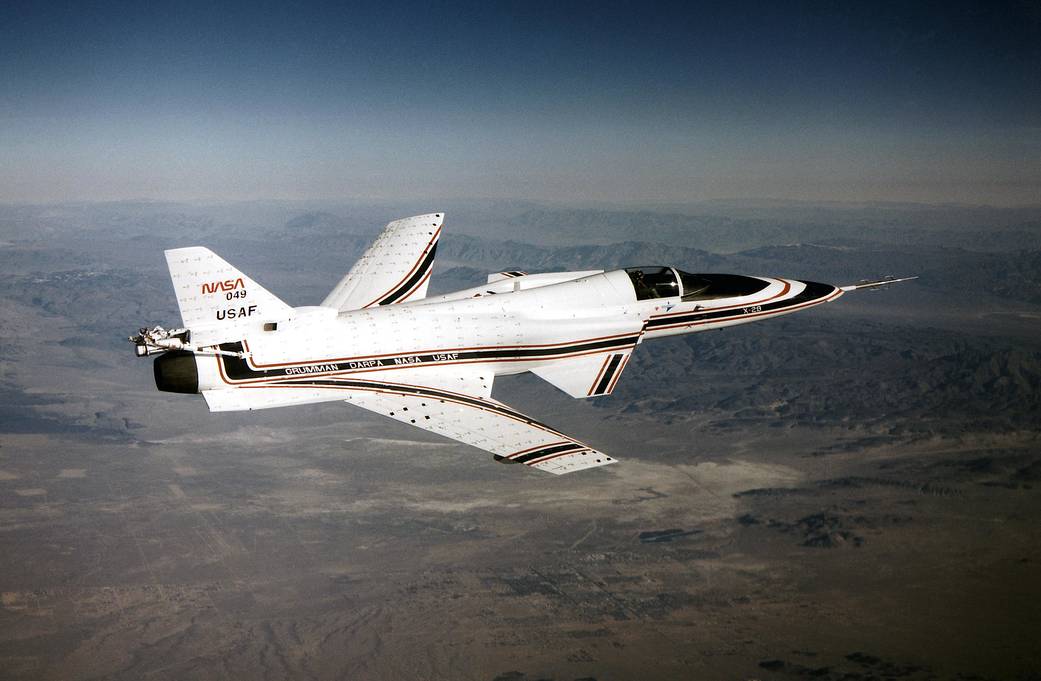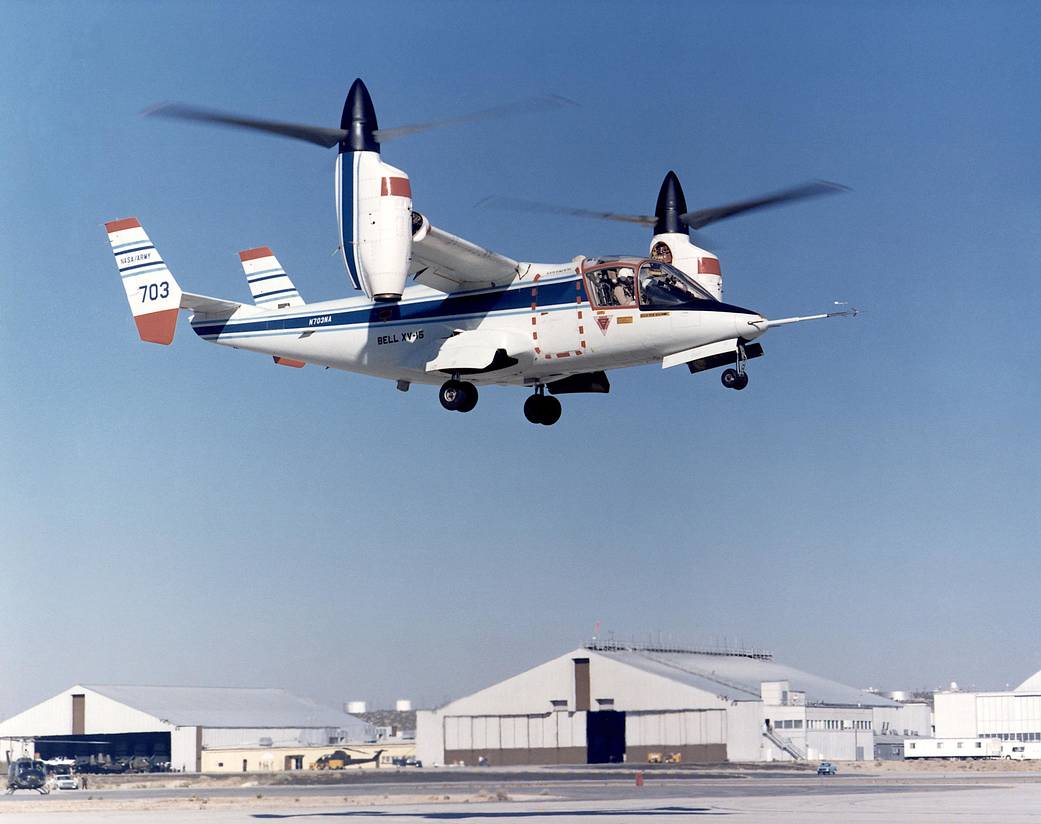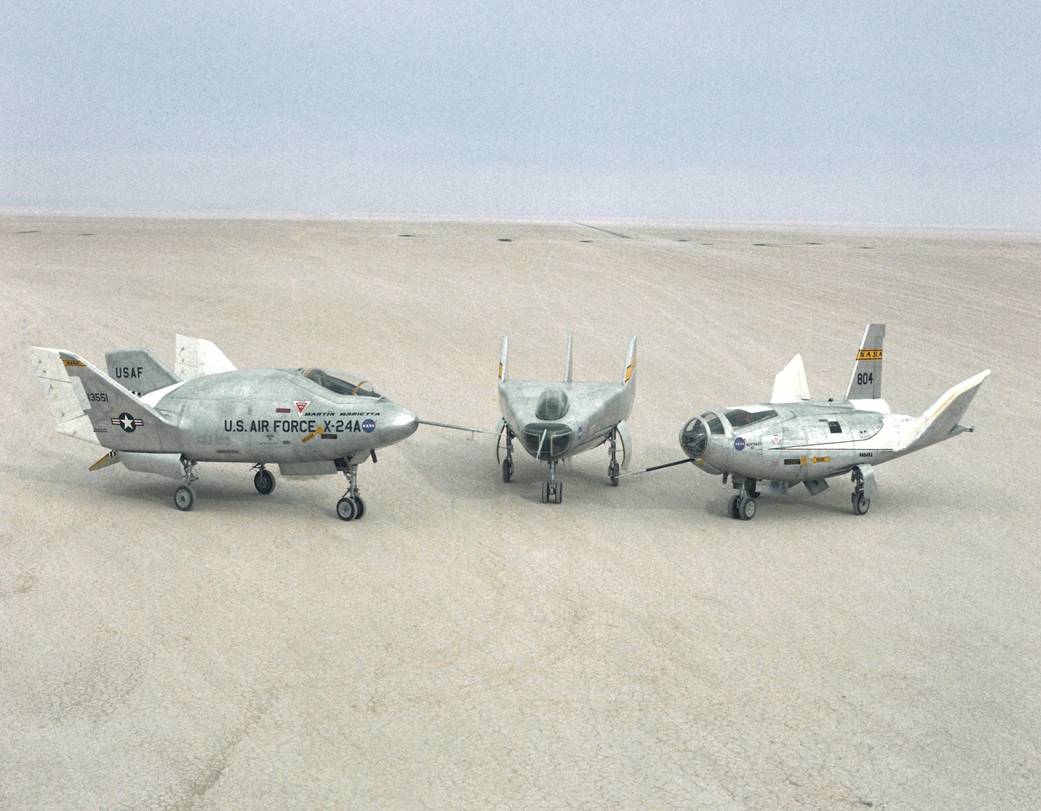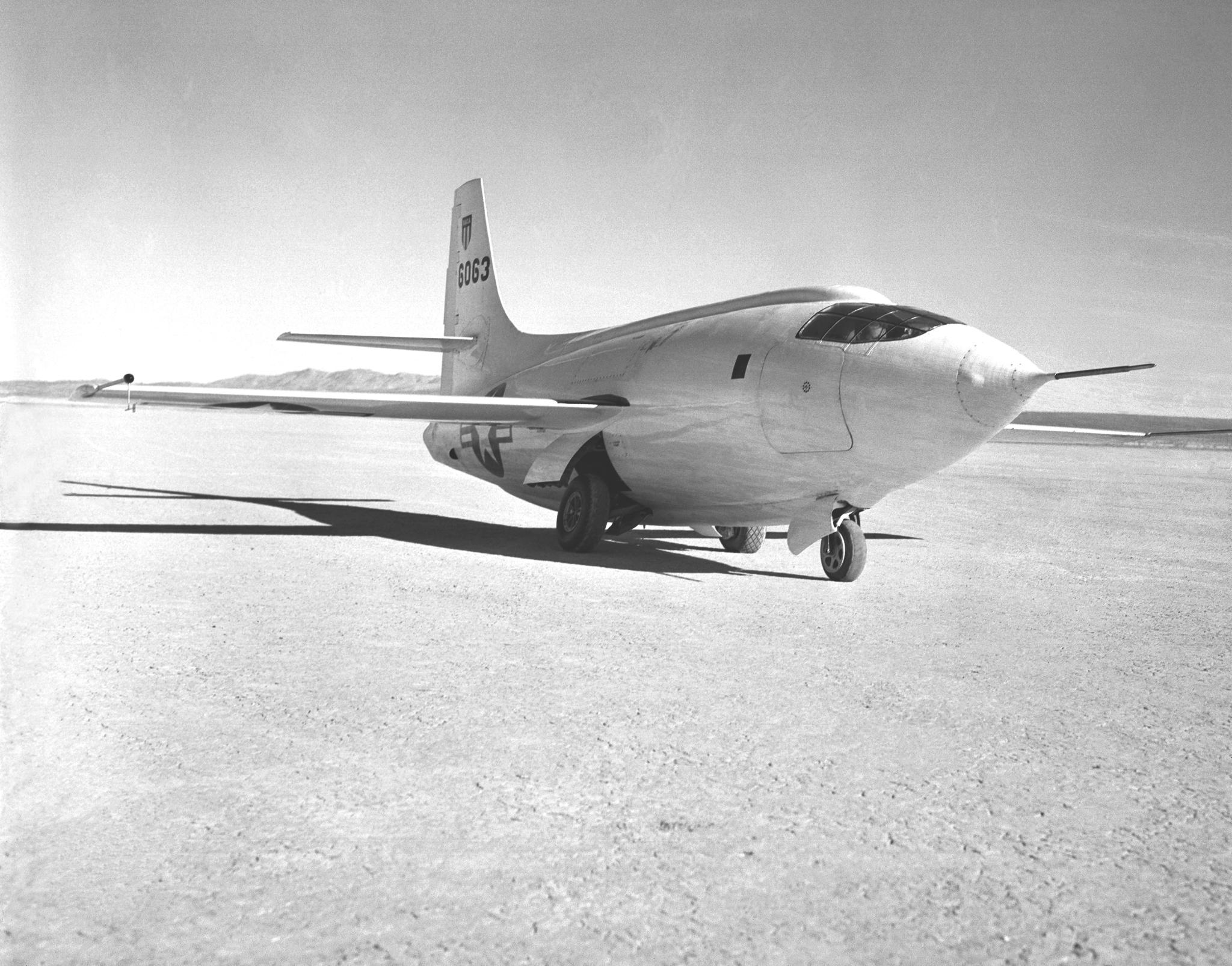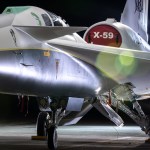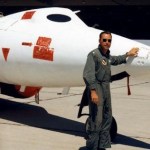NASA Armstrong
X-Planes
Experimental aircraft, or X-planes, are built for a wide range of research purposes – technology or concept demonstrators, unmanned test missiles, and even as prototypes. Here is an overview of X-planes researched and tested at NASA’s Armstrong Flight Research Center in Edwards, California.
X-59 Supersonic Research Aircraft
NASA’s experimental X-59 aircraft is the centerpiece of NASA’s Quesst mission to gather information intended to help enable a new era of commercial supersonic air travel over land. The shape of the X-59 is designed so that, when flying faster than the speed of sound, the resulting shock waves coming off the airplane – measured as changes in air pressure, which we perceive as sound – reach the ground as a thump rather than a boom.
Learn More
NASA’s X-59 Goes from Green to Red, White, and Blue
NASA’s X-59 quiet supersonic aircraft continues to make progress, most recently moving to the paint barn at Lockheed Martin Skunk…
Read the Story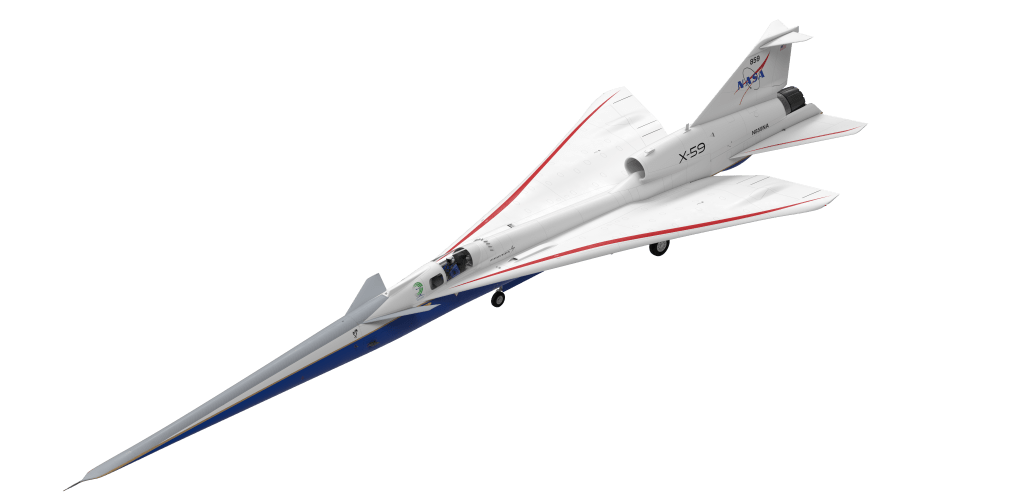
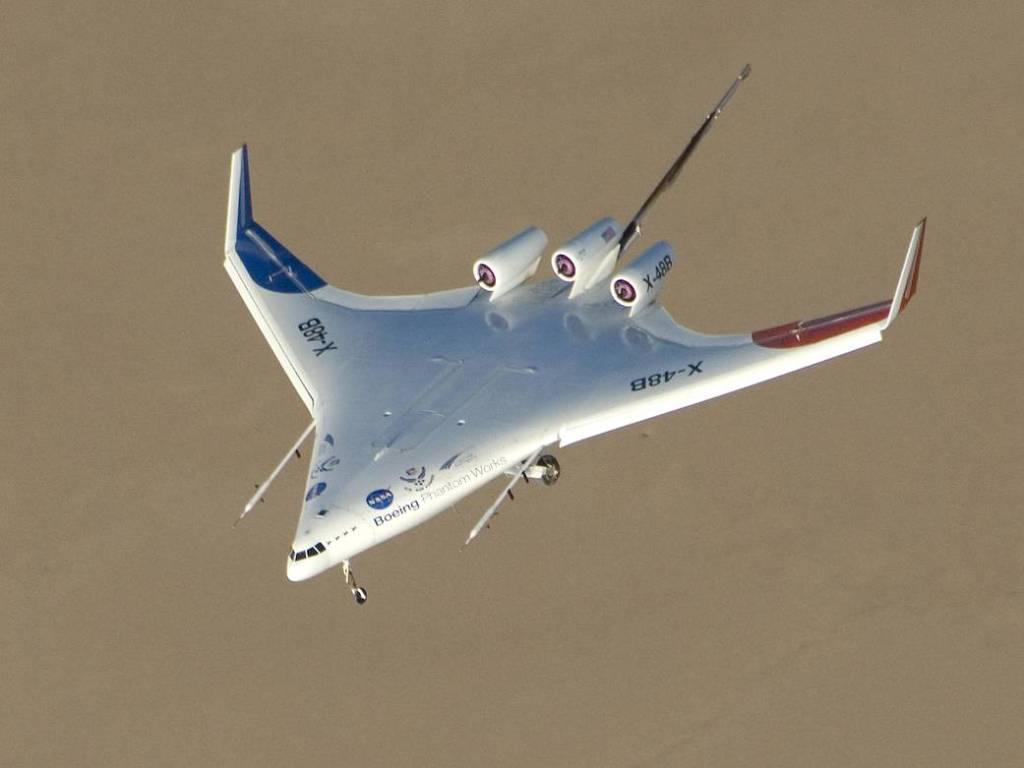
X-48 Blended Wing Body
The 8.5%-scale, remotely piloted X-48B was developed to study the structural, aerodynamic, and operational advantages of the blended wing body concept, a cross between a conventional plane and a flying wing design. The follow-on upgraded modified version was designated the X-48C Hybrid/Blended Wing Body and demonstrated technology concepts for cleaner and quieter commercial air travel.
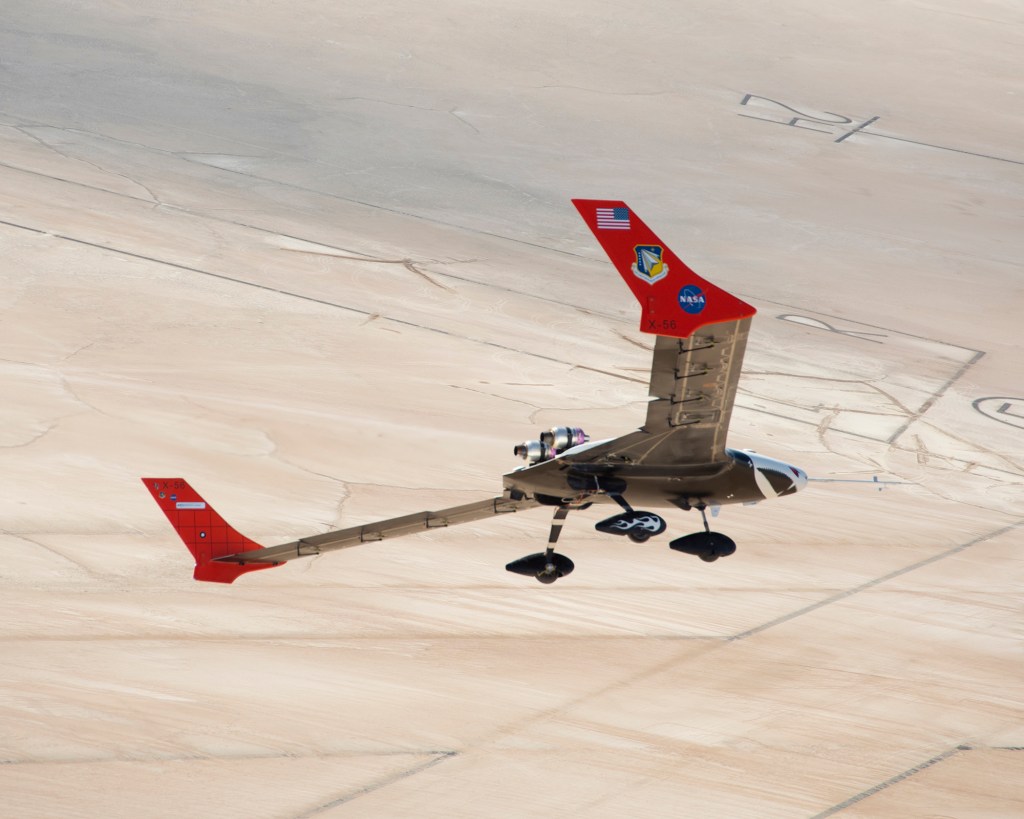
X-56A Multi-Utility Technology Test Bed
The remotely piloted X-56A Multi-Utility Technology Testbed was developed by Lockheed Martin for the AFRL to test active aeroelastic control technologies for flutter suppression and gust-load alleviation on flexible wing structures. NASA Armstrong conducted testing with the X-56A to support research on lightweight structures and advanced control technologies for future efficient, environmentally friendly transport aircraft.

X-57 Maxwell Electric Propulsion Airplane
NASA’s X-57 Maxwell is the agency’s first all-electric experimental aircraft and is NASA’s first crewed X-plane in two decades. The primary goal of the X-57 project is to share the aircraft’s electric-propulsion-focused design and airworthiness process with regulators, which will advance certification approaches for distributed electric propulsion in emerging electric aircraft markets.
X-53 Active Aeroelastic Wing (AAW)
NASA Armstrong, in cooperation with the AFRL and Boeing Phantom Works, researched a high-tech adaptation of the Wright brothers rudimentary "wing-warping" approach to aircraft flight control in the Active Aeroelastic Wing (AAW), also known as X-53, flight research project. The focus of AAW research was on developing and validating the concept of aircraft roll control by twisting a flexible wing on a full-size, modern aircraft. A Navy preproduction F/A-18A was used for testing.
Learn More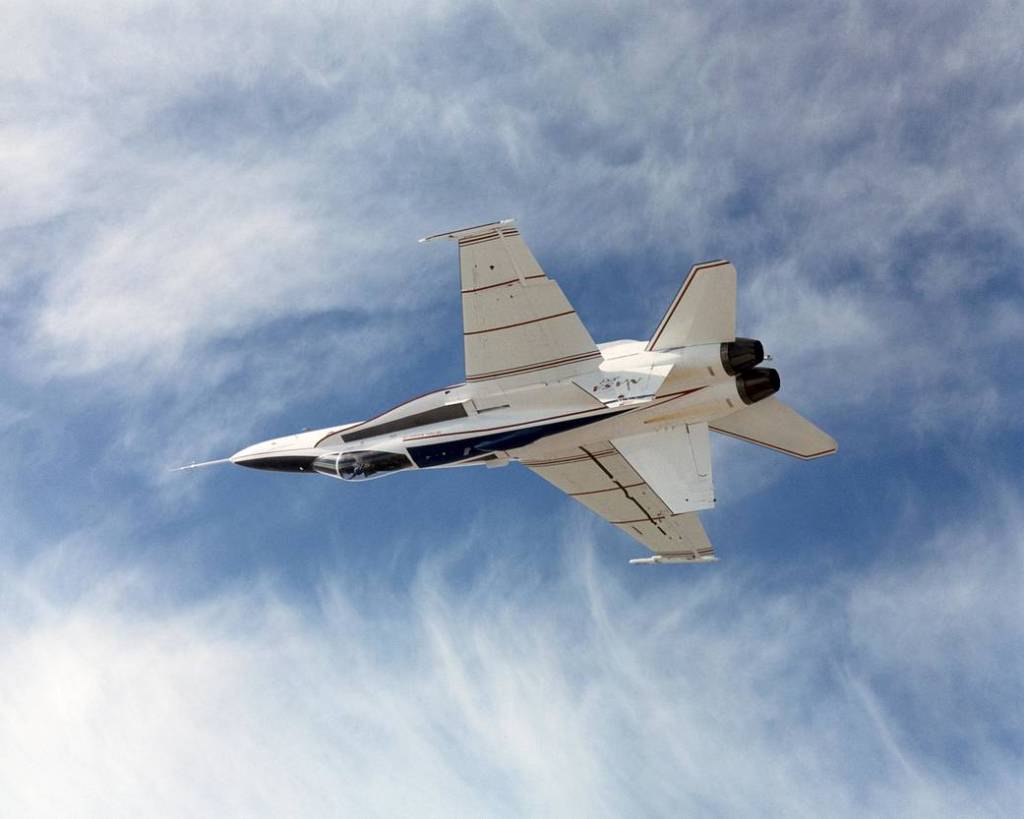
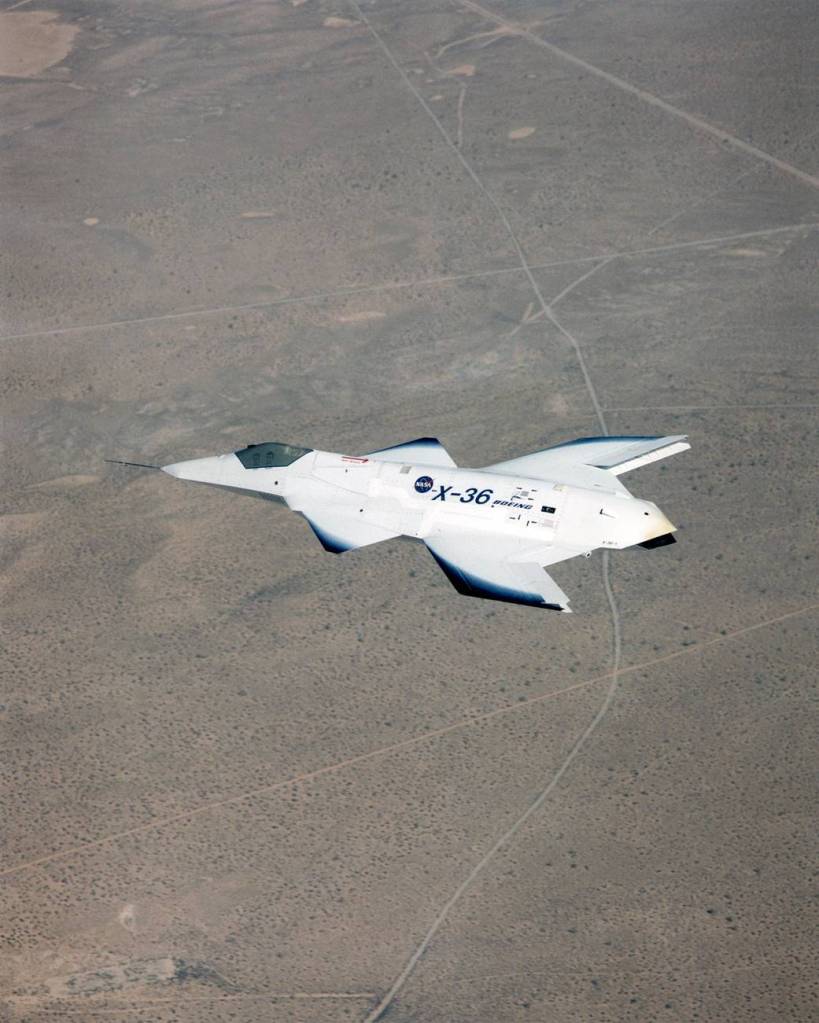
X-36 Tailless Fighter Agility Research Aircraft
The NASA/Boeing X-36 Tailless Fighter Agility Research Aircraft demonstrated advanced technologies to improve the maneuverability and survivability of possible future fighter aircraft. The first flight of the remotely piloted aircraft occurred on May 17, 1997, with the final flight closing the original program on Nov. 12, 1997. The aircraft reached an altitude of 20,200 feet and a maximum angle of attack of 40 degrees.
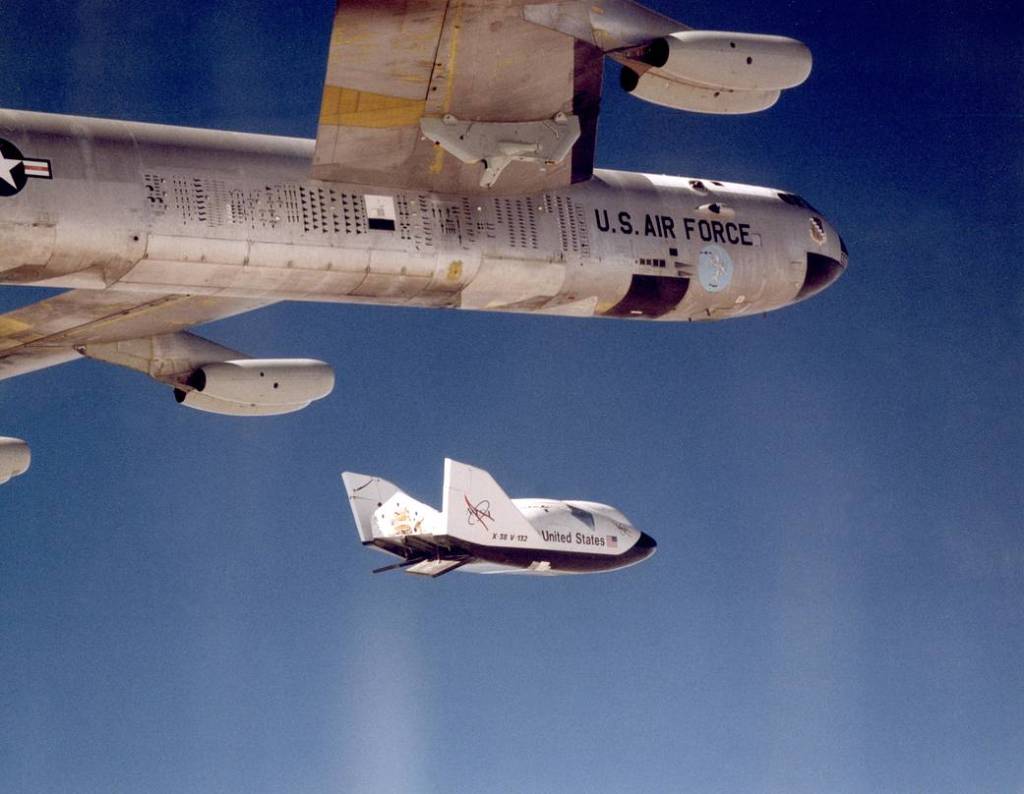
X-38 Prototype Crew Return Vehicle
The X-38 project was a series of five prototype research vehicles developing technology to build and operate a space station crew return vehicle (CRV). The CRV, a lifting body, was automatically piloted and near the landing site, it deployed the largest ram-air parachute made to slow its descent and then land. The X-38 parachute, a ram air or parafoil, continues to be used, both as a personal parachute (they are very steerable) and as heavy lift devices. At the time, the parachute for the X-38 was the largest ever used, but that has been eclipsed by a military parafoil capable of delivering 26,000 pounds of freight. It is known as MegaFly and is designed and manufactured by Para-Flite.
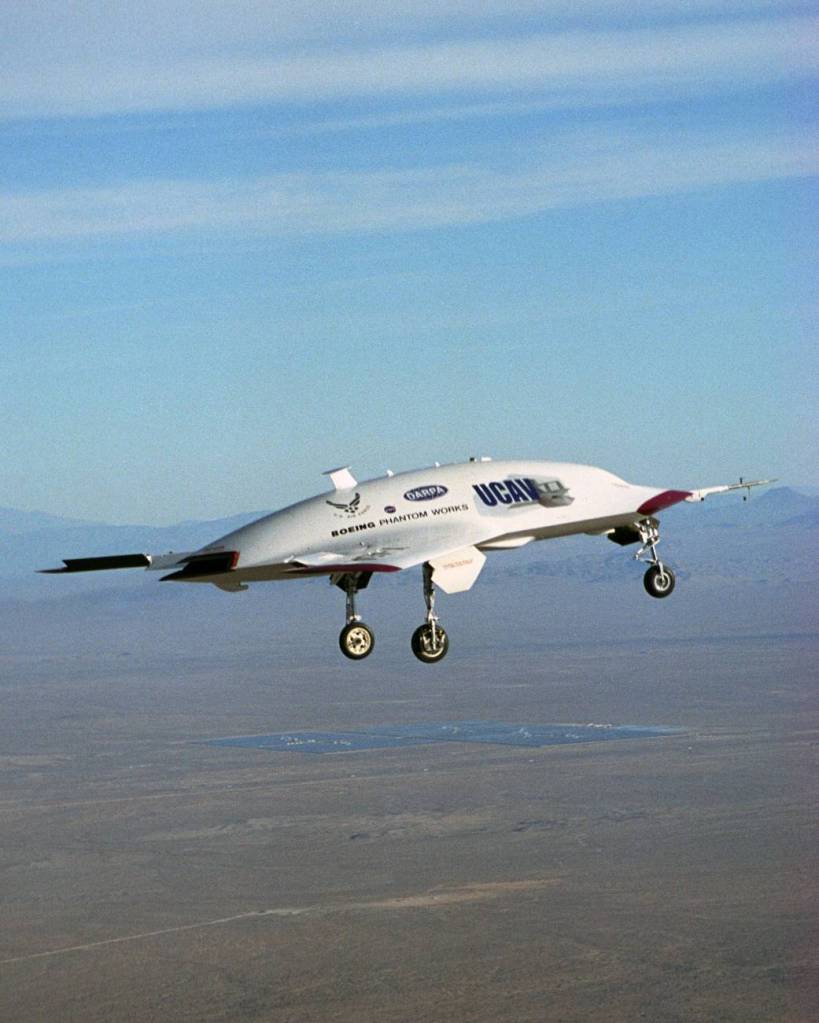
X-45 Unmanned Combat Air Vehicle (UCAV)
The X-45A was part of a wider joint Defense Advanced Research Projects Agency (DARPA), Air Force, and U.S. Navy effort to demonstrate a networked system of high-performance, unmanned air vehicles to effectively and affordably prosecute 21st century combat missions. Boeing’s X-45A was one of the aircraft systems evaluated and the first of two UCAV demonstration versions to be used in advance of fielding operational systems. NASA Armstrong provided technical expertise and support facilities.
X-43A Hypersonic Experimental Vehicle
NASA’s X-43A Hypersonic Experimental Vehicle, or “Hyper-X,” was developed to flight test a dual-mode, integrated scramjet propulsion system (the vehicle’s shape was a critical part of the engine) at speeds from Mach 7 up to Mach 10. Unlike rockets, which must carry both their fuel and oxidizer, scramjets carry only fuel; they take oxygen from the atmosphere. This reduces weight, raising payload or increasing capability. In 2004, the X-43A became the first scramjet-powered aircraft to successfully operate in flight.
Learn More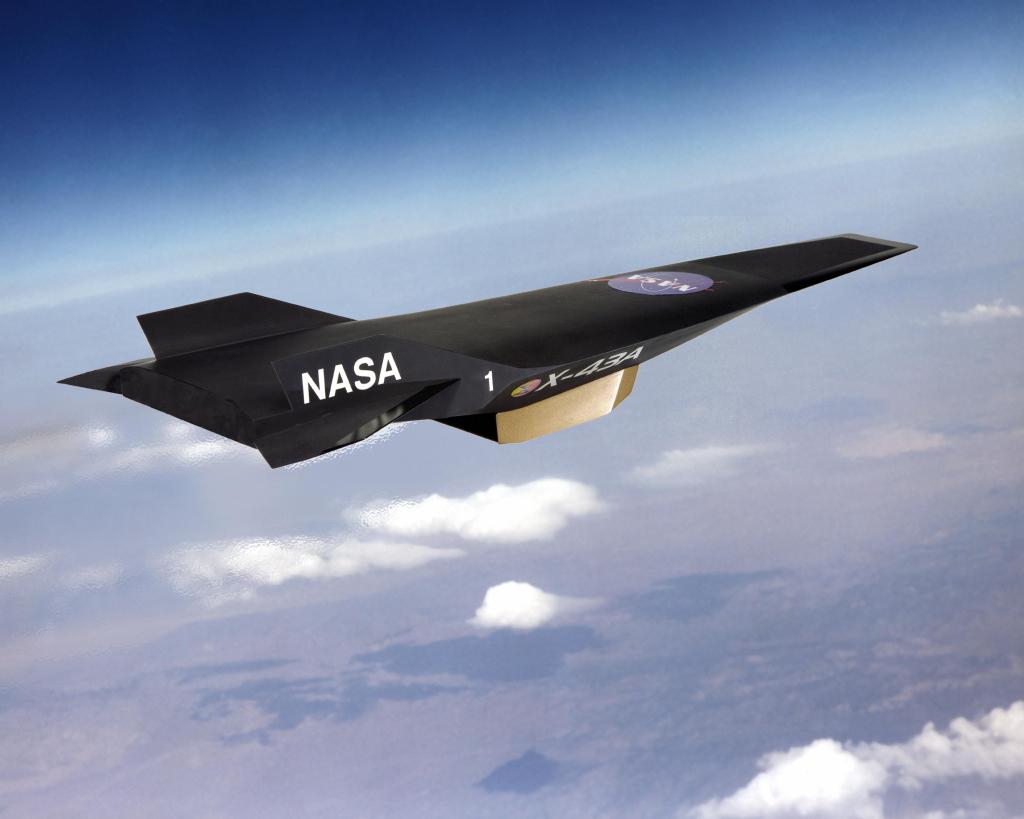
X-31 Enhanced Fighter Maneuverability Demonstrator
Two X-31 Enhanced Fighter Maneuverability Demonstrators were test-flown during the early 1990s at NASA Armstrong to obtain data on control in the post-stall flight regime. The X-31 program demonstrated the value of thrust vectoring – directing engine exhaust flow – coupled with advanced flight control systems, to provide controlled flight at very high angles of attack. It was the first international X-plane (with Germany).
Learn More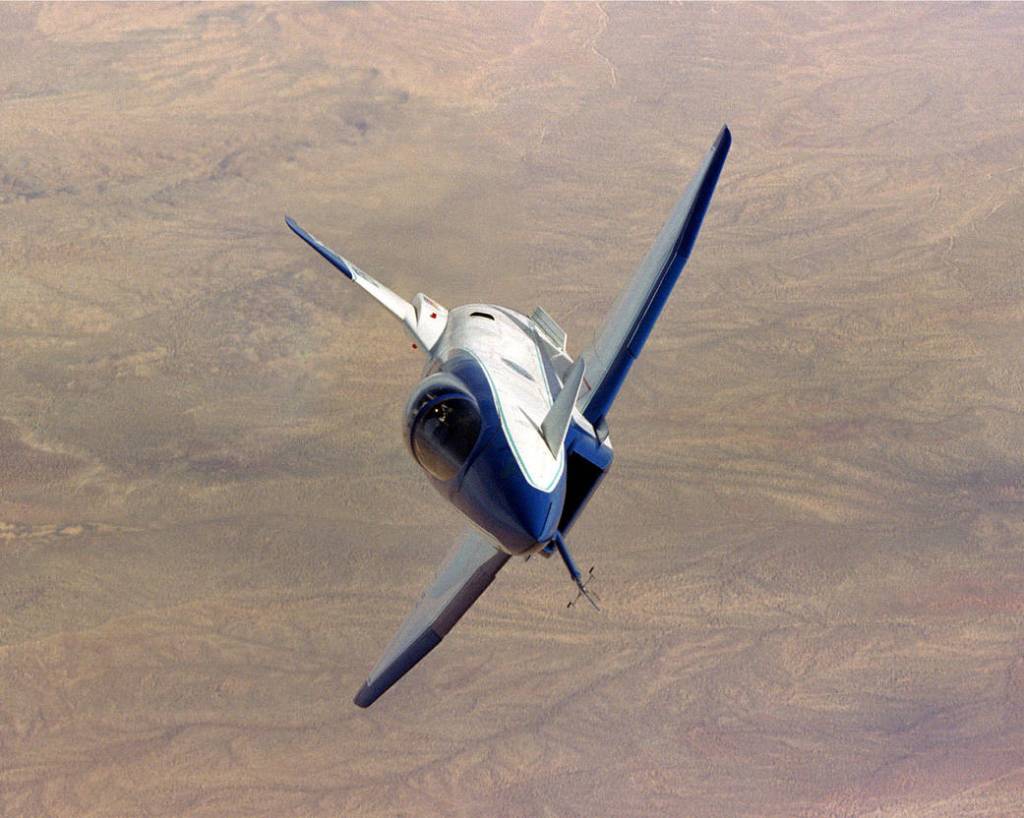
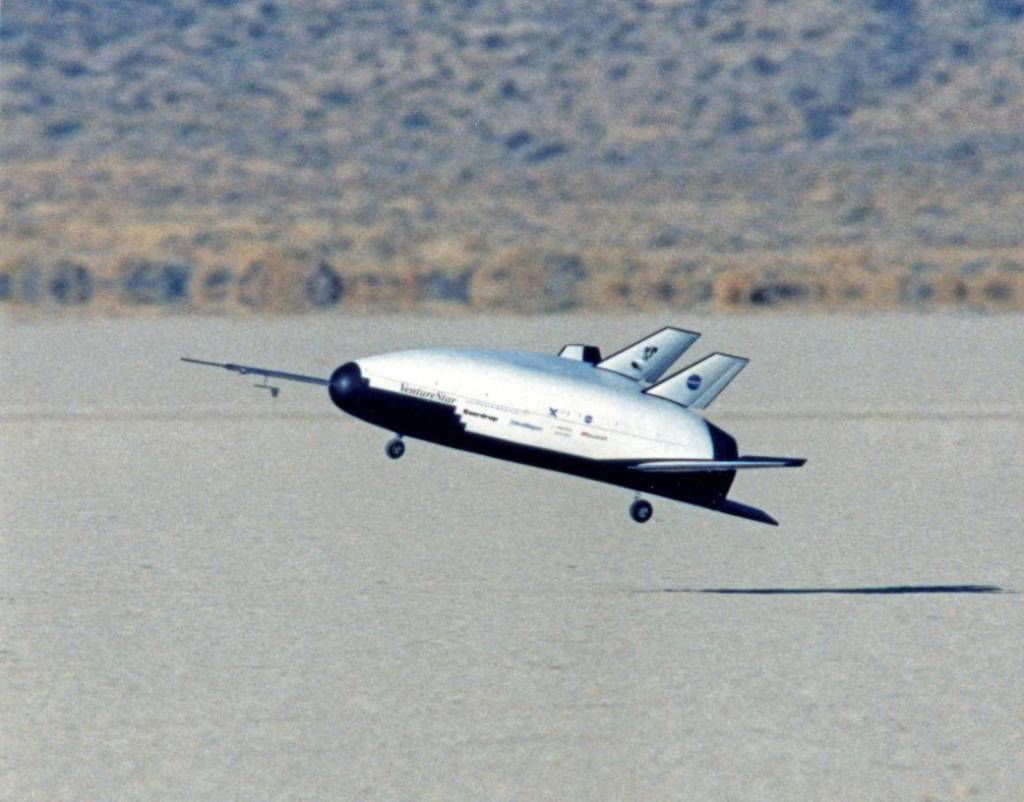
X-33 Advanced Technology Demonstrator
NASA selected Lockheed Martin to design, build, and fly the X-33 Advanced Technology Demonstrator test vehicle between March and December 1999. The X-33, a half-scale vehicle, was to be an unpiloted vehicle, launched vertically like a rocket but landed horizontally like an airplane, and was expected to be capable of reaching an altitude of approximately 50 miles and speeds of more than Mach 11. It was expected to demonstrate in flight the new technologies needed for a reusable launch vehicle (RLV). However, in 2001 NASA ceased funding the program.
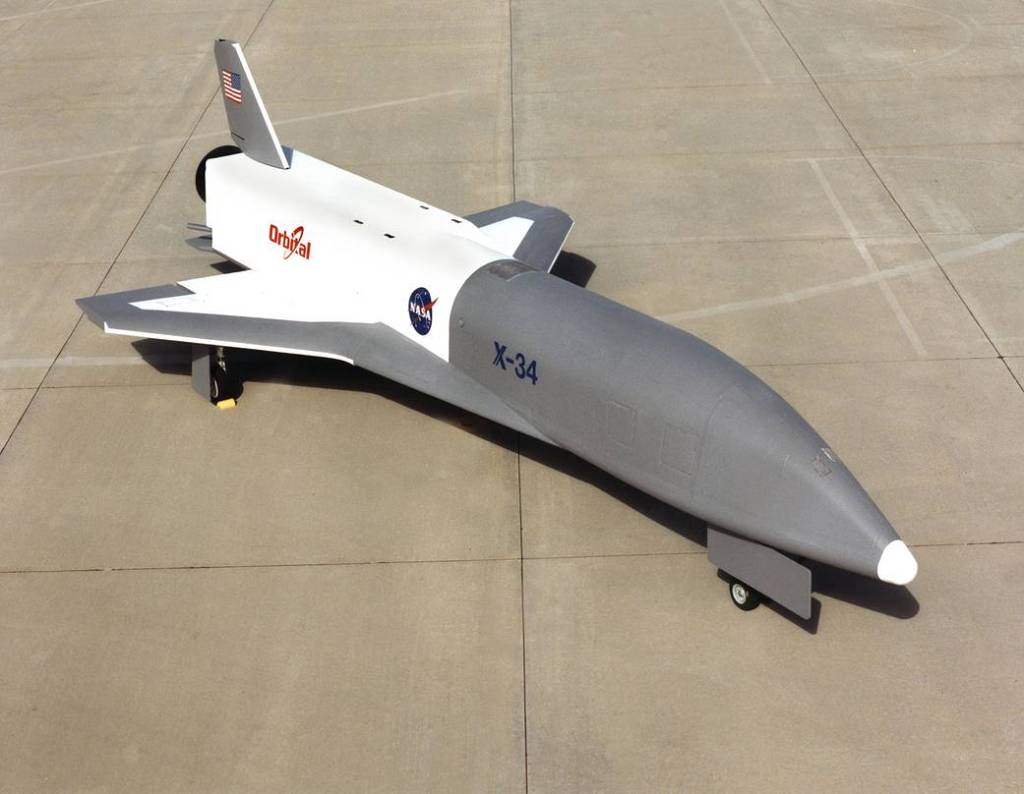
X-34 Advanced Technology Demonstrator
In the summer of 1996, NASA contracted with Orbital Sciences Corp. to design, build, and test-fly the X-34 – a small, reusable technology demonstrator for a launch vehicle. The X-34 was a single-engine rocket plane that was to be carried aloft and launched from an Orbital Sciences L-1011 aircraft. Captive-carry flights using the prototype of the X-34 were conducted in June and September 1999. The demonstrator was intended to fly at Mach 8 and to reach an altitude of 250,000 feet, but in 2001 NASA ceased funding the program.
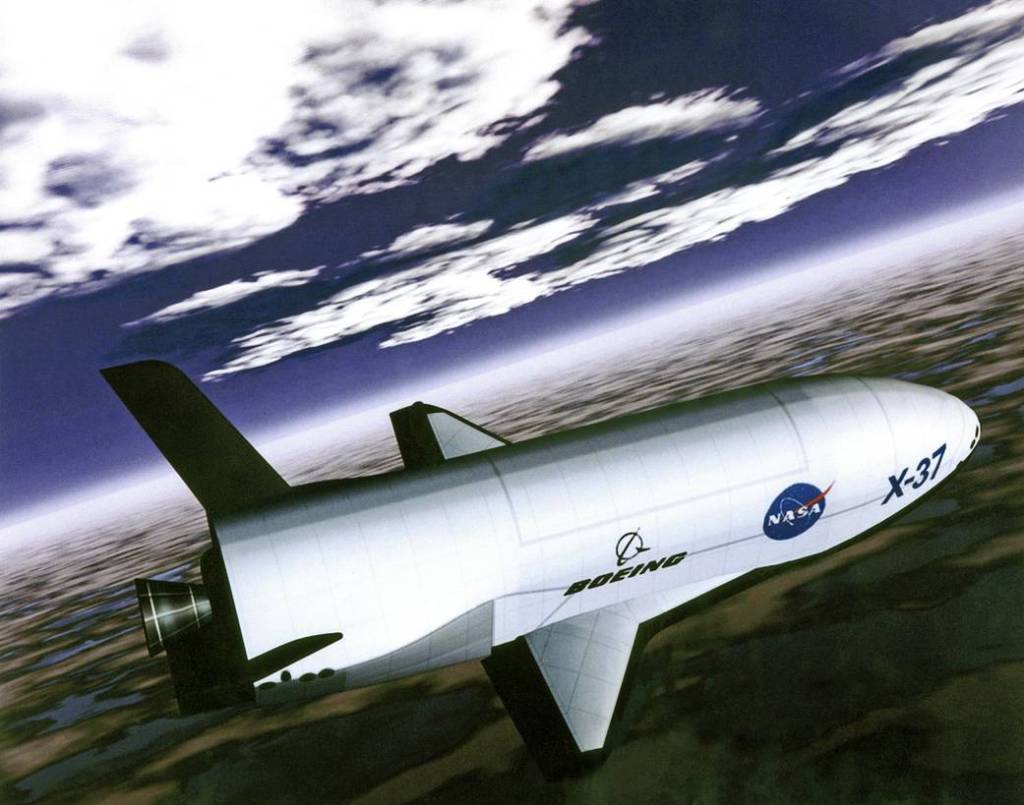
X-37 Advanced Technology Demonstrator
The X-37 program began with NASA as an orbital experimental vehicle to be lifted to orbit by the Space Shuttle or a reusable launch vehicle and return to Earth under its own power. It was built by the Boeing Phantom Works under a cooperative agreement signed in July 1999. NASA transferred the X-37 project to the Department of Defense in 2004.
X-40A Space Maneuvering Vehicle
The X-40A was an 80% subscale version of the X-37 experimental autonomous spaceplane technology demonstrator, but lacking propulsion or thermal protection systems. The X-40A flew seven approach and landing test flights at NASA Armstrong in 2001 to reduce risk for the X-37 program, including in-flight evaluation of guidance, navigation, and control software for its autonomous flight controls.
Learn More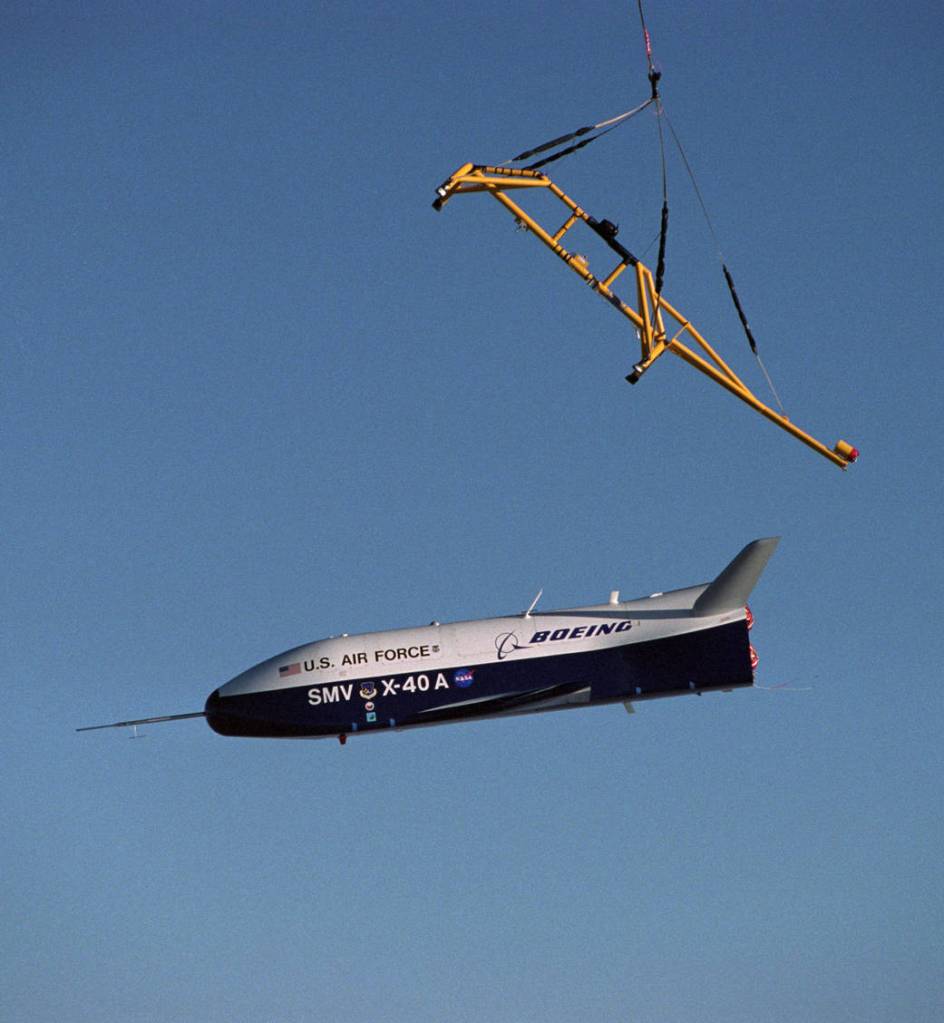
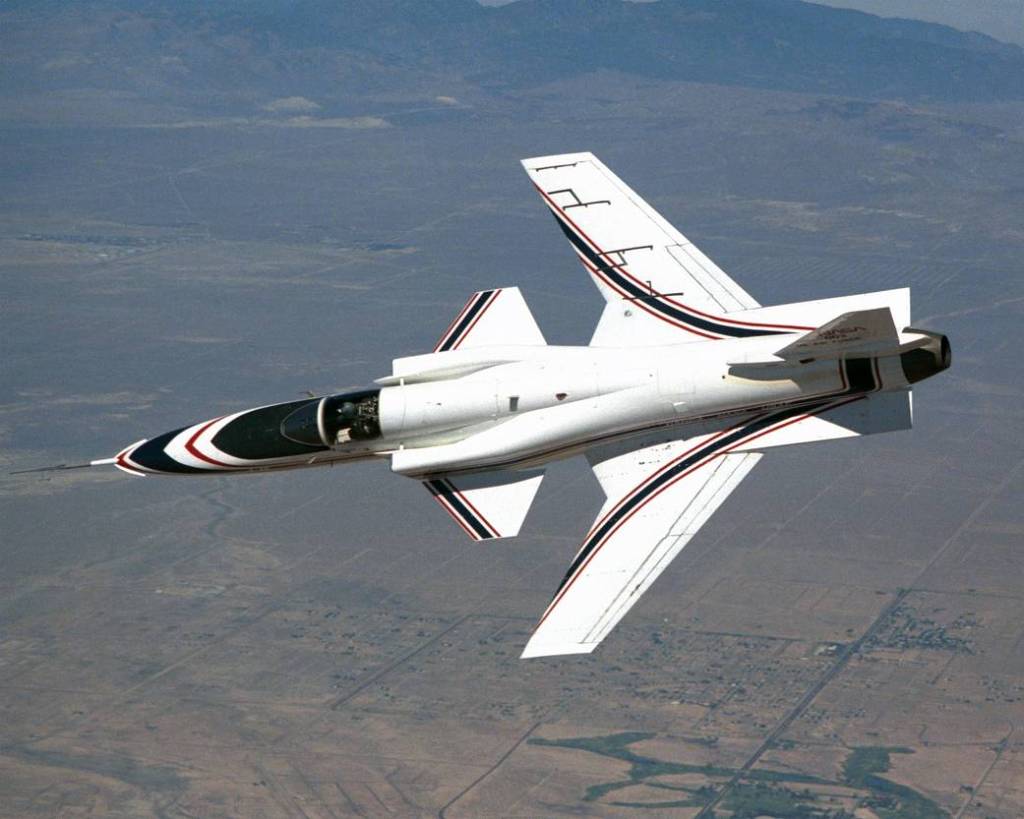
X-29 Advanced Technology Demonstrator Aircraft
Two X-29 aircraft were flown at NASA Armstrong to investigate advanced concepts and technologies from 1984 to 1992. The aircraft's forward-swept wings were mounted well back on the fuselage, while its canards (horizontal stabilizers to control pitch) were in front of the wings instead of on the tail. The complex geometries of the wings and canards combined to provide exceptional maneuverability, supersonic performance, and a light structure.
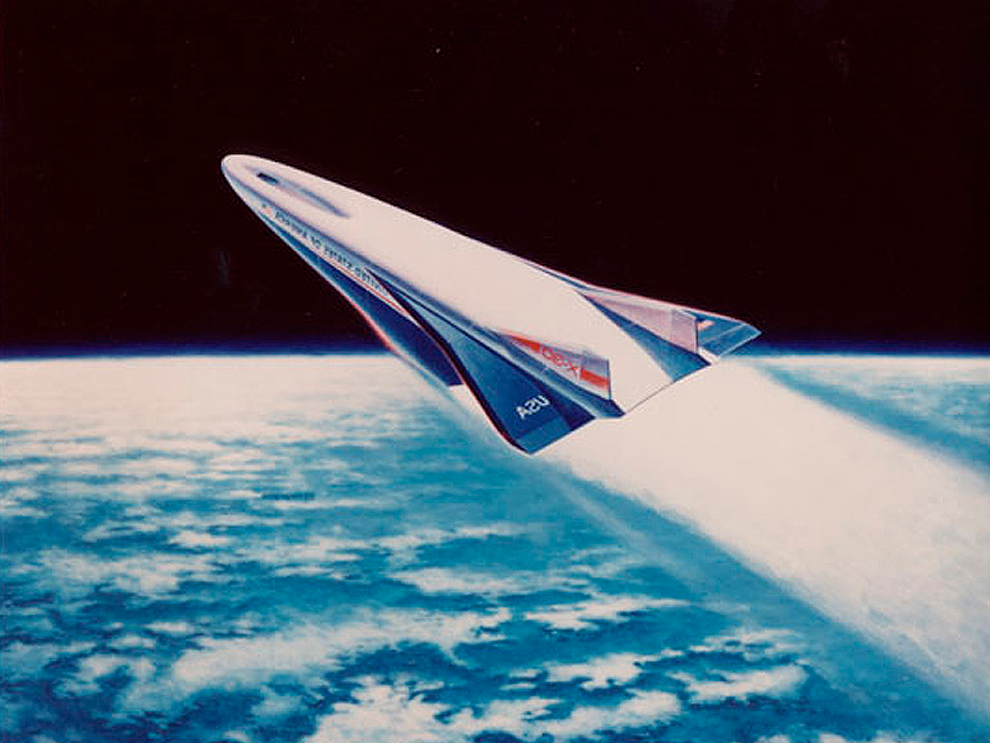
X-30
Two X-29 aircraft were flown at NASA Armstrong to investigate advanced concepts and technologies from 1984 to 1992. The aircraft's forward-swept wings were mounted well back on the fuselage, while its canards (horizontal stabilizers to control pitch) were in front of the wings instead of on the tail. The complex geometries of the wings and canards combined to provide exceptional maneuverability, supersonic performance, and a light structure.
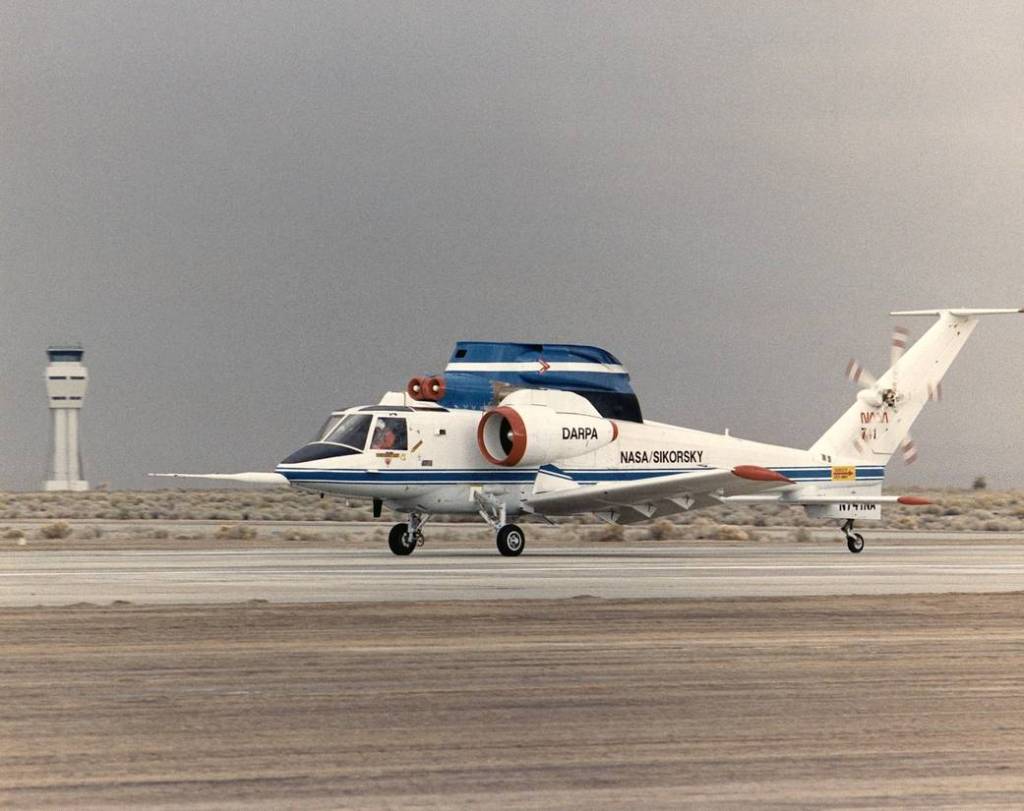
X-Wing
One of the most unusual experimental flight vehicles appearing at NASA Armstrong in the 1980s was the Rotor Systems Research Aircraft (RSRA) X-Wing aircraft. The craft was developed originally and then modified by Sikorsky Aircraft for a joint NASA/DARPA program and was rolled out August 19, 1986. Taxi tests and initial low-altitude flight tests without the main rotor attached were carried out at NASA Armstrong before the program was terminated in 1988.
XV-15 Tiltrotor
The development of the XV-15 Tiltrotor research aircraft was initiated in 1973 with joint U.S. Army/NASA funding as a "proof of concept” or "technology demonstrator" program with two aircraft being built by Bell Helicopter Textron in 1977. Limited research was conducted at NASA Armstrong in 1980 and 1981. The XV-15 combined standard aircraft cruise flight with vertical takeoff and landing (VTOL) and short takeoff and landing (STOL) capabilities. Operating as a conventional airplane, the XV-15 could cruise for more than two hours. To land, the proprotors rotated up to the helicopter rotor position and flew as a helicopter to a vertical landing.
Learn More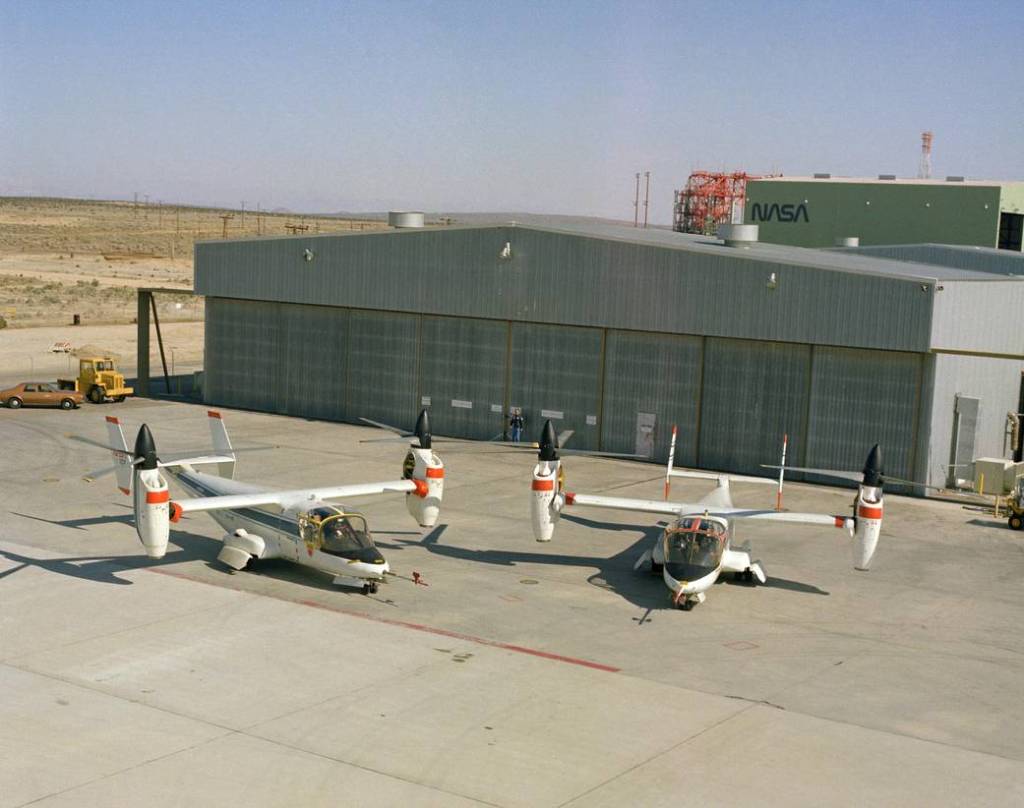
HL-10 Lifting Body
The HL-10 was part of a larger family of lifting bodies built and flown to examine the possibility of returning from space to land like an aircraft on a runway. The HL-10 was flown 37 times and set several program records, including in 1970, when NASA's Bill Dana flew the HL-10 to 90,303 feet, the highest altitude reached by any of the lifting body craft, and in 1969, when the HL-10 was the first lifting body to fly supersonically, with NASA pilot John Manke at the controls.
Learn More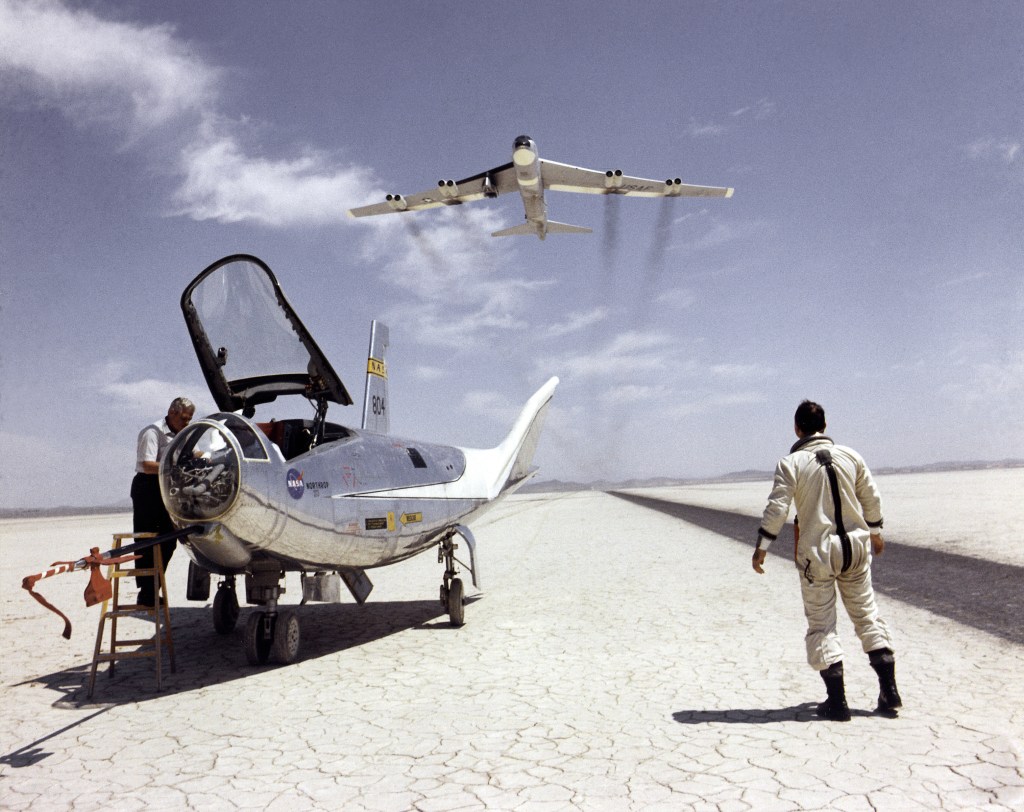
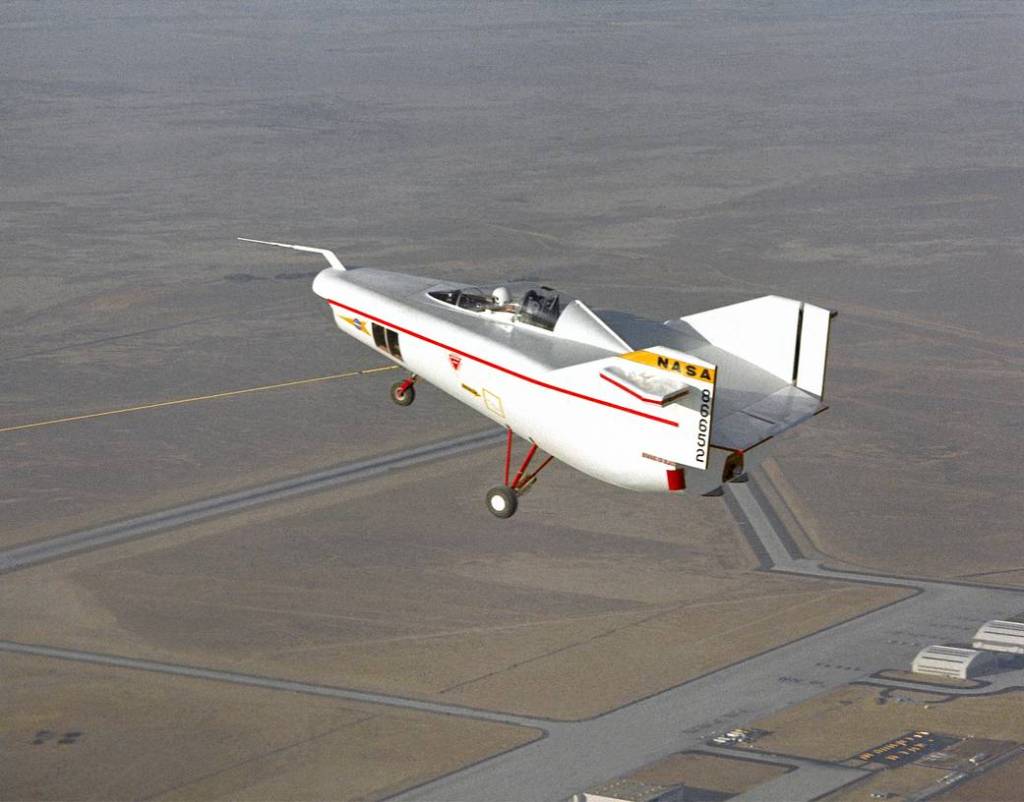
M2-F1
In 1962, NASA Armstrong Director Paul Bikle approved a program to build a lightweight, unpowered lifting body as a prototype to flight test the wingless concept. The M2-F1 was the first piloted, full-scale lifting body. It validated the concept, first theorized at NASA’s Ames Research Center in the 1950s. More than 400 ground tows and 77 aircraft tow flights were carried out with the M2-F1 before it was retired.
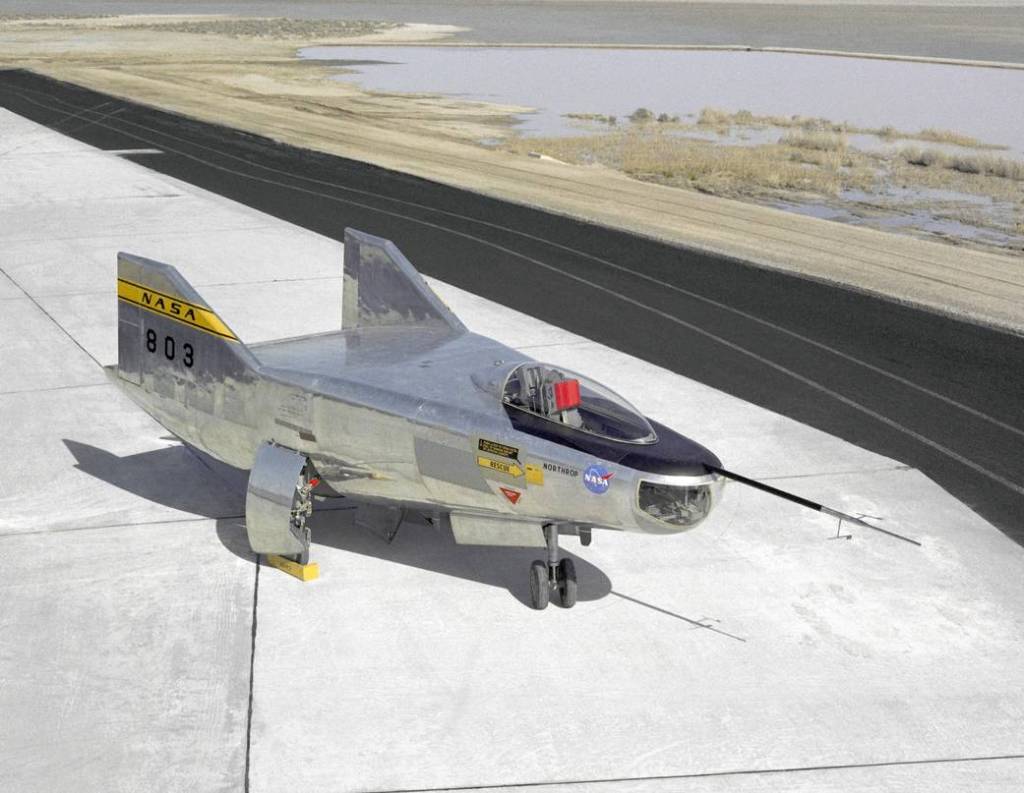
M2-F2/M2-F3
The first free-flight of the M2-F2 came July 12, 1966. On May 10, 1967, on the 16th glide flight, a landing accident severely damaged the vehicle and seriously injured NASA pilot Bruce Peterson. When the M2-F2 was rebuilt and redesignated the M2-F3, it was modified by Northrop with an additional third vertical fin, centered between the tip fins, to improve control characteristics. The M2-F3 reached a top speed of 1,064 mph (Mach 1.6) and altitude of 71,500 feet. During its portion of the lifting body program, the M2-F3 aircraft evaluated a rate command augmentation control system and a side-arm control stick similar to side-arm controllers now used on many modern aircraft.
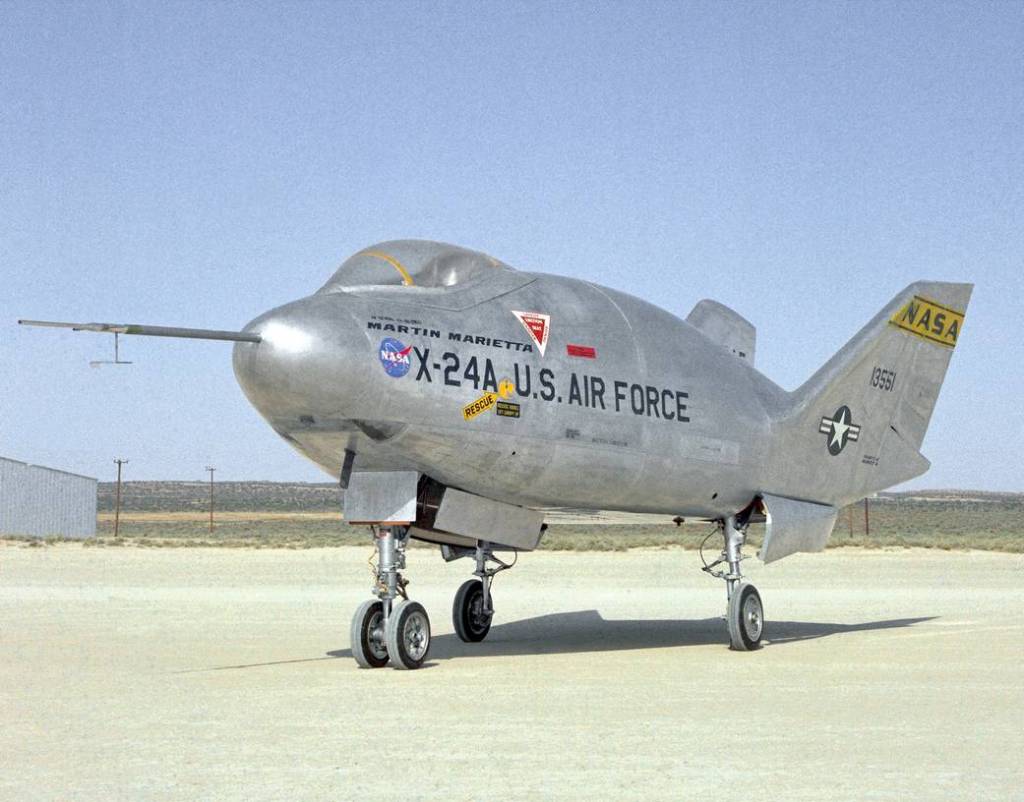
X-24A
Built for the Air Force by the Martin Company, the X-24A was a bulbous-shaped aircraft, with three vertical fins at the rear for directional control. The X-24A was flown 28 times in a program that helped validate the concept that a wingless vehicle could be landed unpowered when returning from space. Some three decades later, X-38 program managers elected to use the X-24A design to save money, since the existing X-24A aerodynamic database was complete.
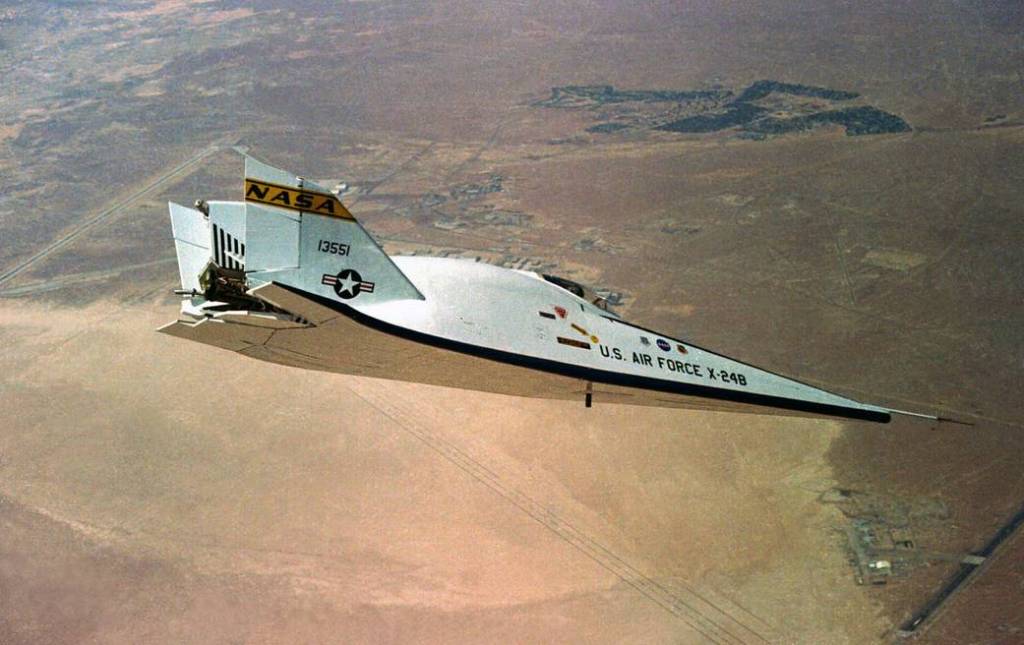
X-24B
To reduce the costs of constructing a research vehicle, the Air Force returned the X-24A to the Martin Company for modifications that converted its bulbous shape into one resembling a "flying flatiron" – a rounded top, flat bottom, and a double-delta planform with a long, pointed nose. Among the final flights with the X-24B were two precise landings on the main concrete runway at Edwards Air Force Base, which showed that accurate unpowered re-entry vehicle landings were operationally feasible.
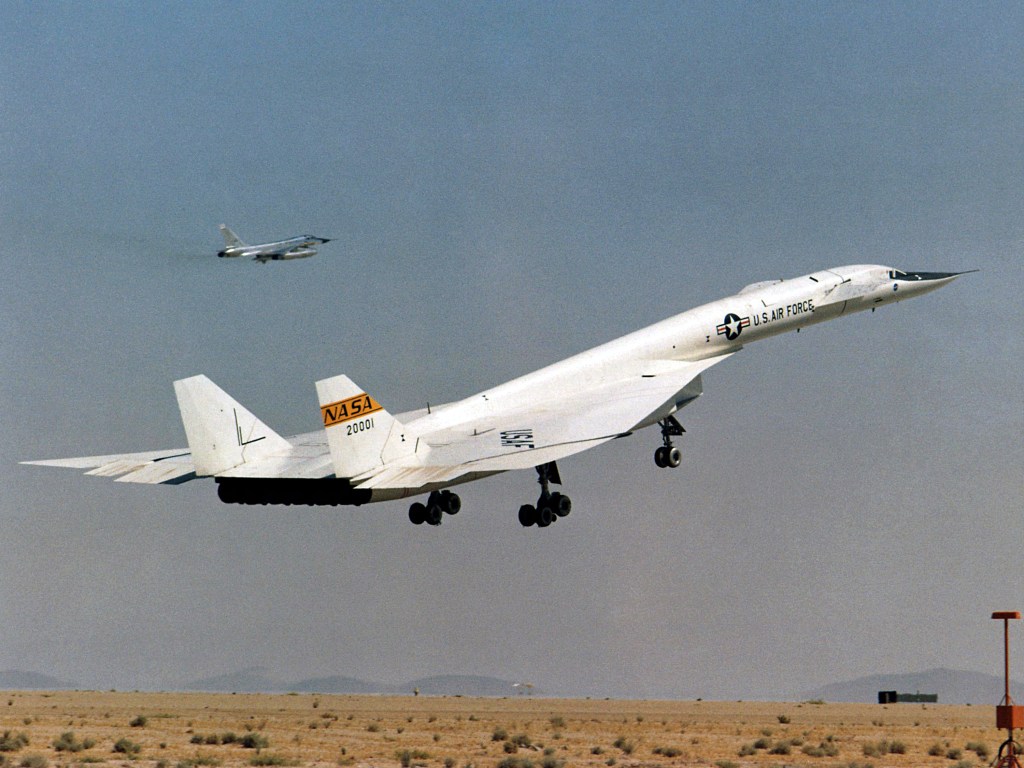
XB-70 Valkyrie
The XB-70 Valkyrie seemed to be a perfect testbed for supersonic transport (SST) research. It was the same size as the projected SST designs, and used similar structural materials, such as brazed stainless-steel honeycomb and titanium. Thus, the XB-70A's role changed from a manned bomber prototype to one of the most remarkable research aircraft ever flown. Early flights provided data on several issues facing SST designers, including aircraft noise, operational problems, control system design, comparison of wind tunnel predictions with actual flight data, and high-altitude, clear-air turbulence.
X-15 Hypersonic Research Program
The rocket-powered X-15 hypersonic research aircraft flew during a period of 9 years and set the world's unofficial speed and altitude records of 4,520 mph (Mach 6.7) and 354,200 feet in a program to investigate all aspects of piloted hypersonic flight, the first of its kind. Information gained from the highly successful X-15 program contributed to the development of the Mercury-, Gemini-, and Apollo-piloted spaceflight programs as well as the Space Shuttle program. Eight of its 12 pilots earned astronaut wings flying the aircraft.
Learn More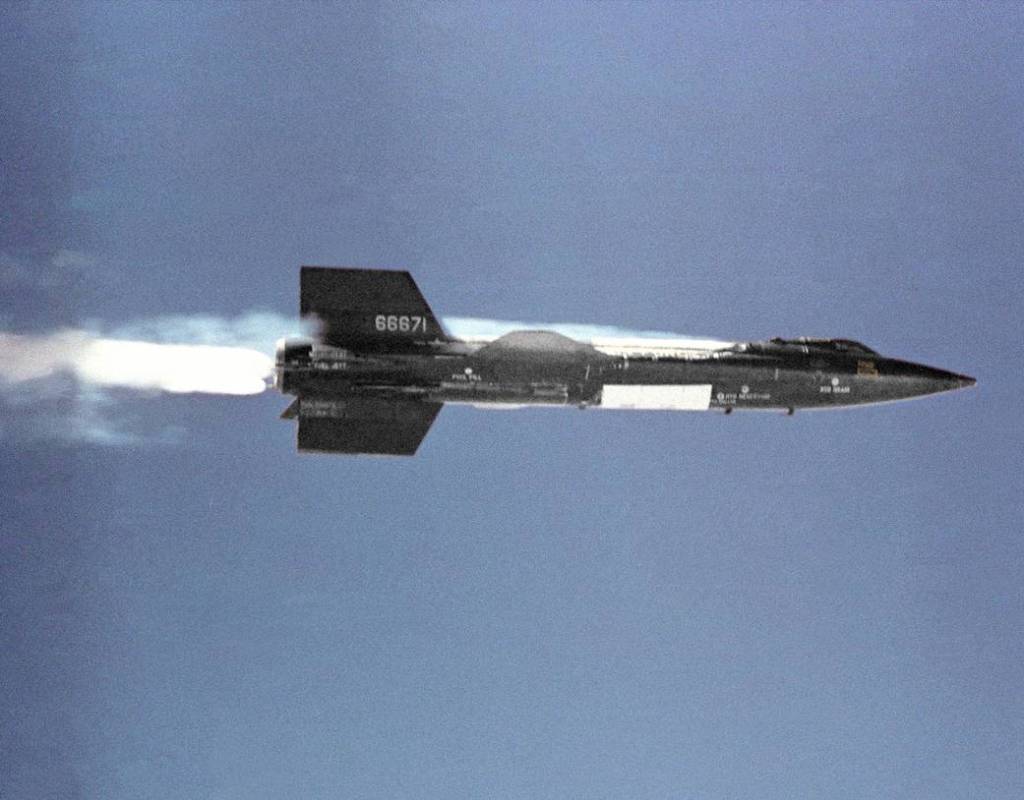
X-1
The first-generation X-1 aircraft changed aviation history in numerous ways, and not simply because they were the first to fly faster than the speed of sound. Rather, they established the concept of the research aircraft built solely for experimental purposes, unhampered by any military or commercial requirements or expectations of being produced in large numbers. Although subsequent X-planes were built for a wide range of purposes – technology or concept demonstrators, unmanned test missiles, and even as prototypes – the X-1s were built to go faster than an aircraft had ever flown before. The second-generation X-1s (A-D) used a new cylindrical fuselage just more than 4 1/2 feet longer than the original design for larger propellant capacity and longer or faster flights.
Learn More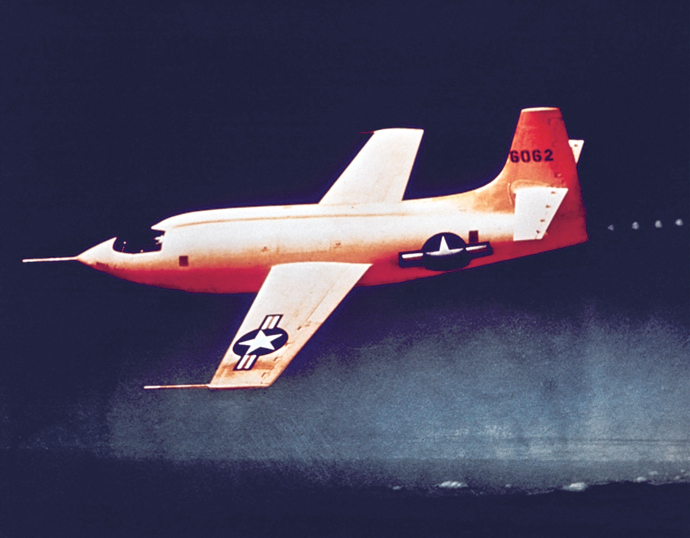
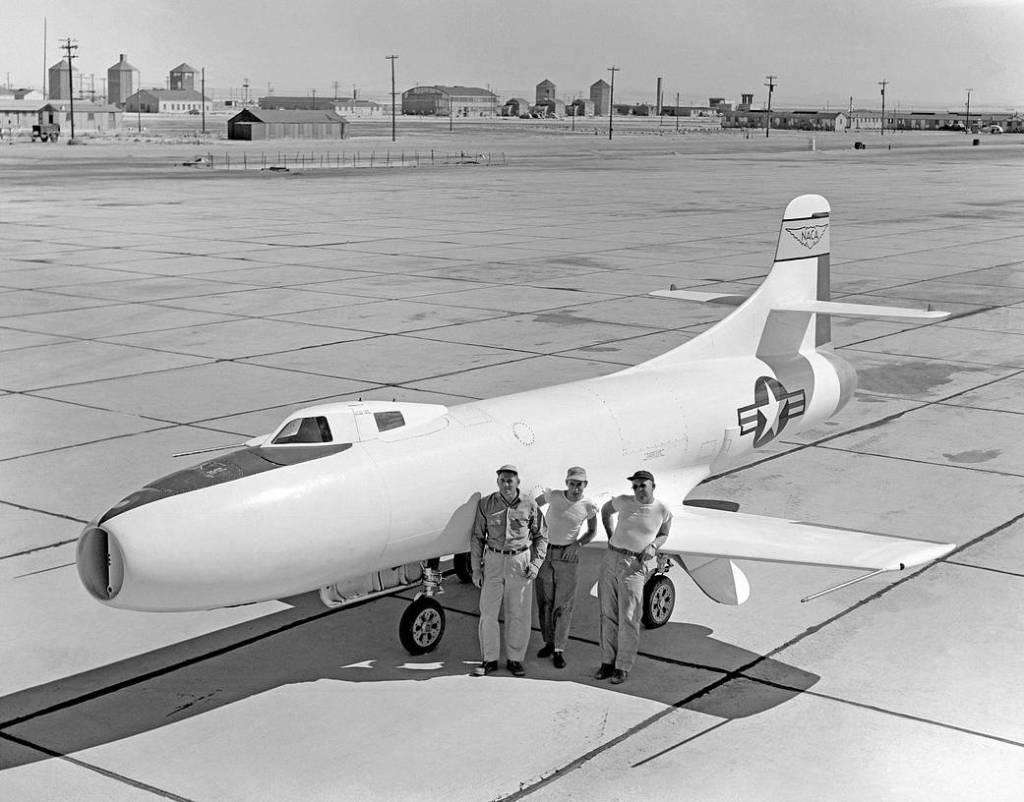
D-558-I 'Skystreaks'
The D-558-I "Skystreaks" were among the early transonic (0.8 to 1.2 Mach) research airplanes to include the X-4, X-5, and XF-92A. Three of the single-seat, straight-wing aircraft flew from 1947 to 1953 in a joint program involving the National Advisory Committee for Aeronautics (NACA), the Navy-Marine Corp, and the Douglas Aircraft Co. In the process, the Skystreaks set two world speed records. The Roman numeral I in the aircraft's designation referred to the fact that the Skystreak was the Phase I version of what had originally been conceived as a three-phase program, with the Phase II aircraft having swept wings. The third phase never came to fruition.
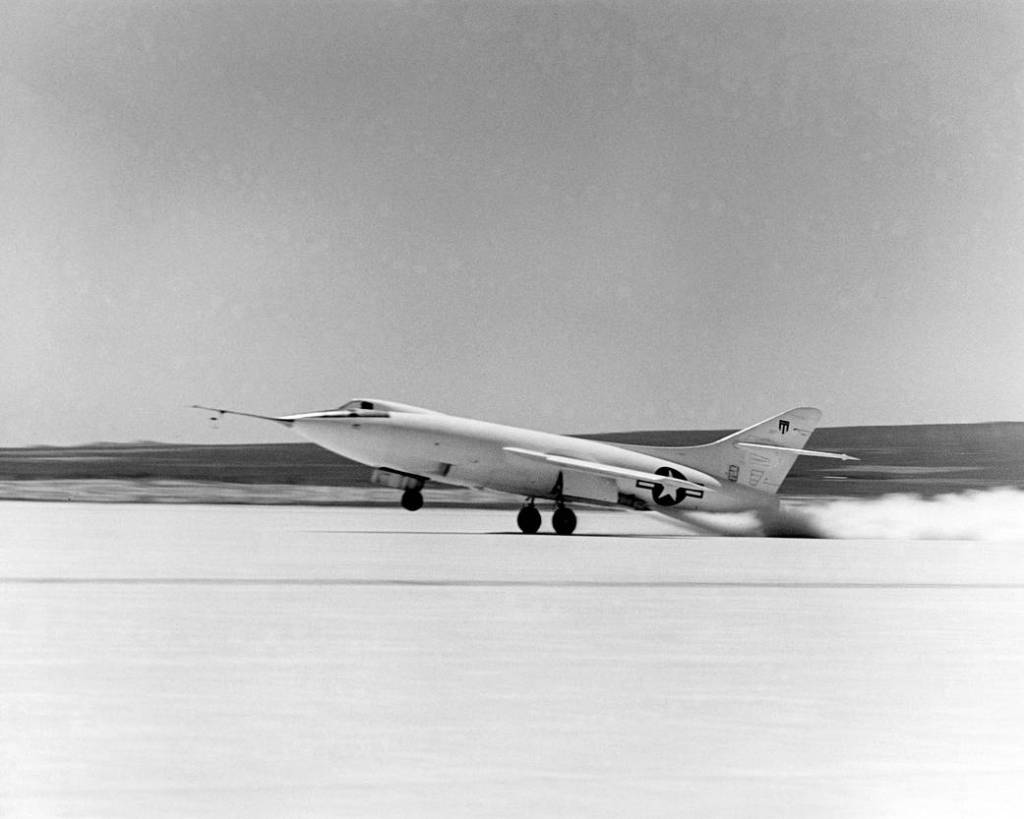
D-558-II 'Skyrockets'
The D-558-II "Skyrockets" were among the early transonic research airplanes. Three of the single-seat, swept-wing aircraft flew from 1948 to 1956 in a joint program involving the NACA, with its flight research done at NASA Armstrong. The Skyrocket made aviation history when it became the first airplane to fly twice the speed of sound, on Nov. 20, 1953.
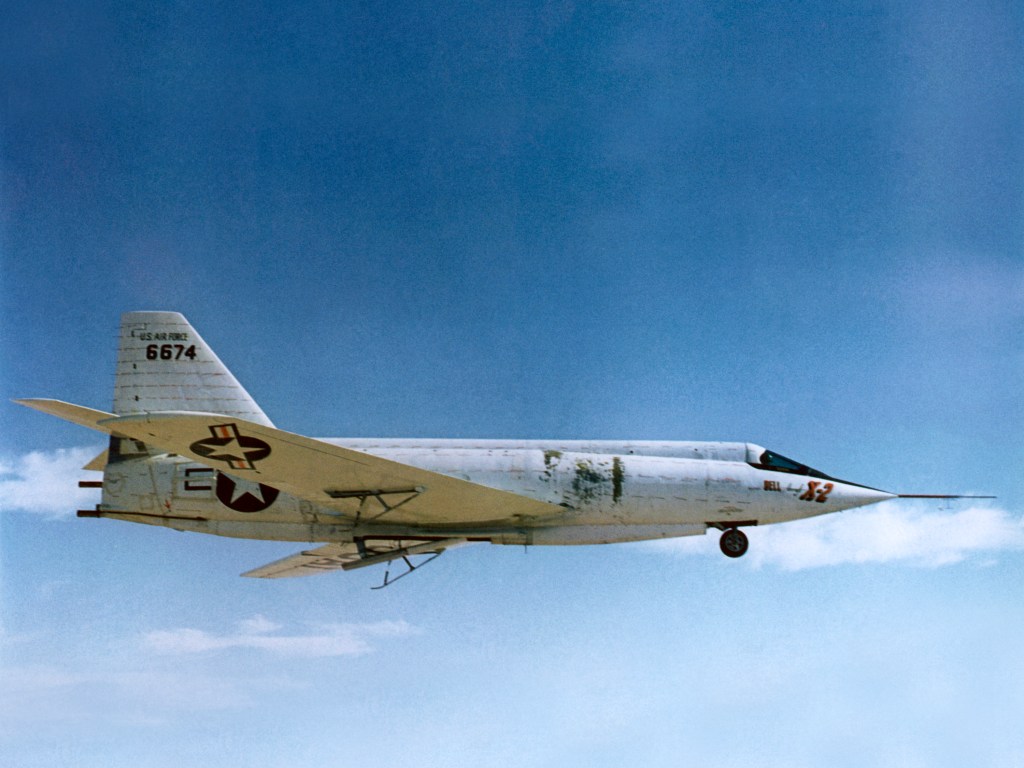
X-2 Starbuster
The X-2 was a rocket-powered, swept-wing research aircraft designed to investigate the structural effects of aerodynamic heating as well as stability and control effectiveness at high speeds and altitudes. This was a joint program between the NACA and the Air Force, although the NACA never flew the swept-wing, rocket-powered aircraft designed to fly Mach 3. Both X-2s were destroyed in accidents, the second at Edwards, claiming the pilot’s life. The NACA supported the Air Force with advice and data analysis.
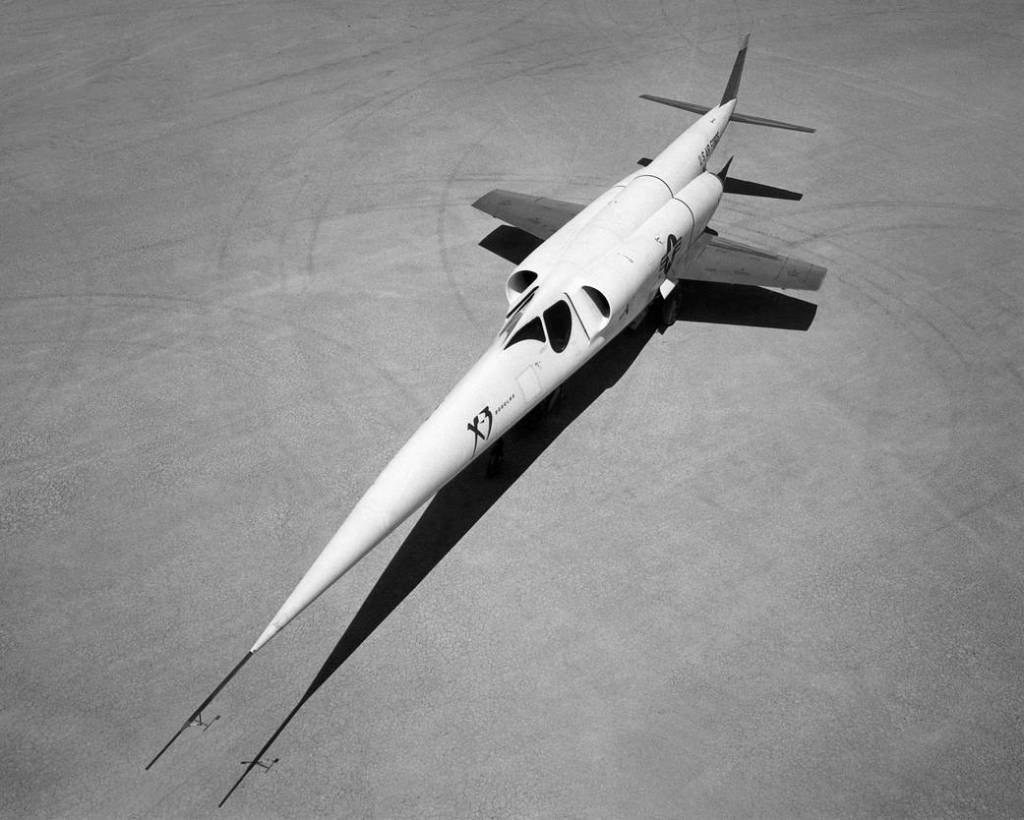
X-3 Stiletto
The goal of the X-3 Stiletto, the sleekest of the early experimental aircraft, was to take off from the ground under its own power, climb to a high altitude, maintain a sustained cruise speed of Mach 2, then land under its own power. The aircraft was also to test the feasibility of low-aspect ratio wings, and the large-scale use of titanium in aircraft structures. The X-3 did not approach its planned performance, instead recording accomplishments not originally planned, including validating the theory of inertia coupling.
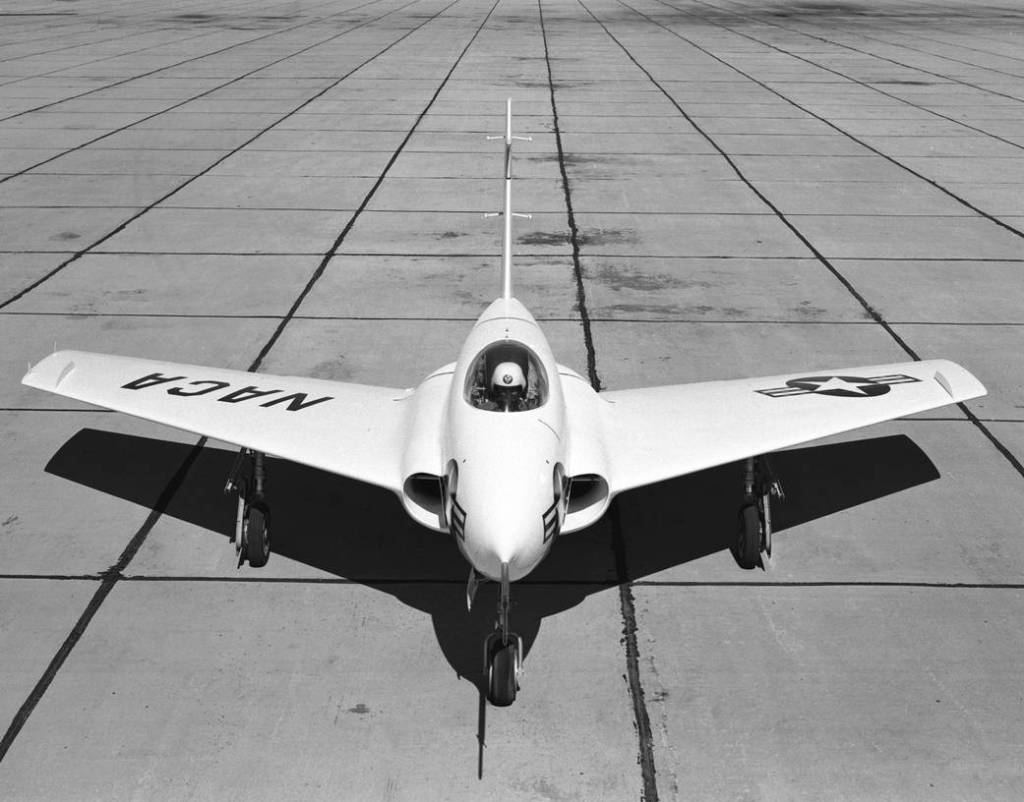
X-4 Bantam
The X-4 was designed to test a semi-tailless wing configuration at transonic speeds. Many engineers believed in the 1940s that such a design, without horizontal stabilizers, would avoid the interaction of shock waves between the wing and stabilizers. The first X-4 proved mechanically unreliable and made only 10 flights. The second X-4 proved far more reliable. It made a total of 20 flights.
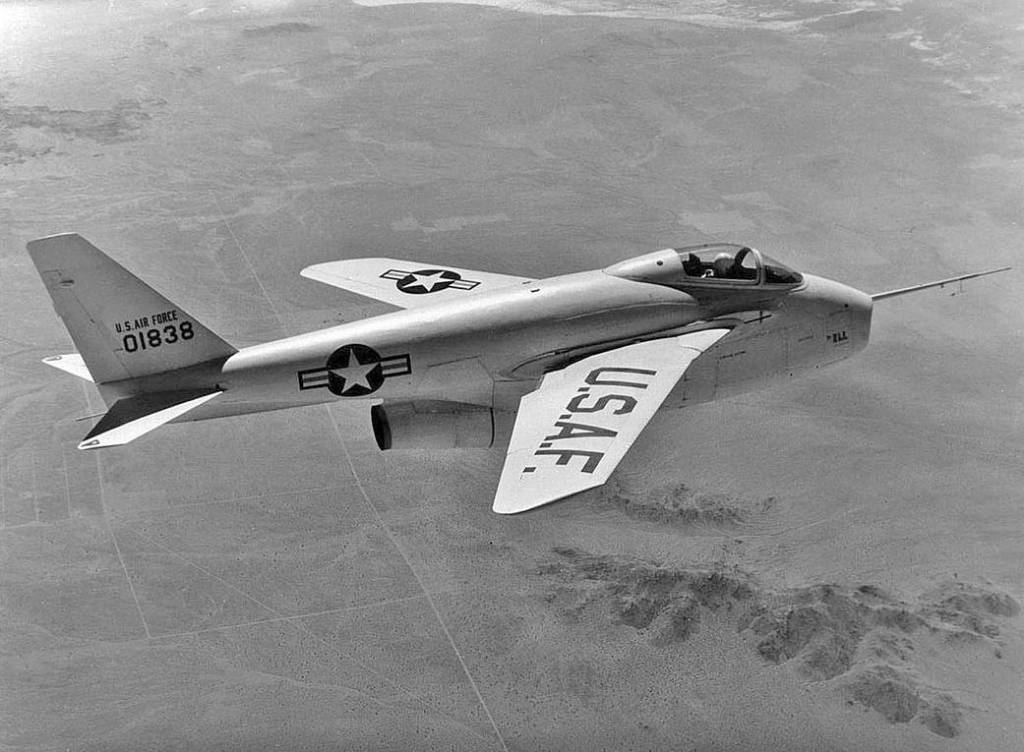
X-5 Research Aircraft
The Bell X-5 was built to test the feasibility of changing the sweep angle of an aircraft's wings in flight. This had advantages from both operational and research points of view. An operational aircraft could take off with its wings fully extended, reducing both its takeoff speed and the length of the runway needed. A variable swept wing aircraft would be equivalent to a series of experimental aircraft, as it could change the wing angle to the desired research objectives.
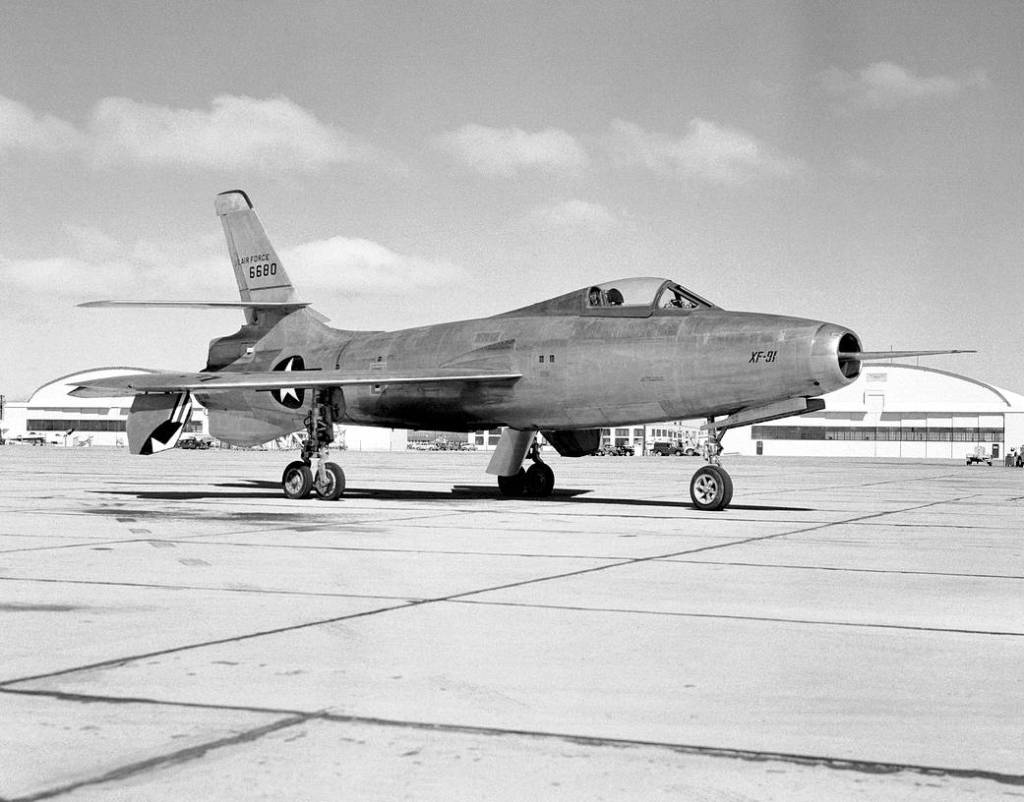
XF-91 Thundercepter
The Republic XF-91 Thundercepter was a single-place fighter-type airplane powered by a General Electric J47-GE-17 turbojet engine. Not only did it have a reverse taper to the wing (to improve the stall characteristics of a swept wing), but it also had four small rocket motors to increase its ability to climb during combat. Things were changing so fast in modern aircraft design that the aircraft was obsolete by the time it first flew.
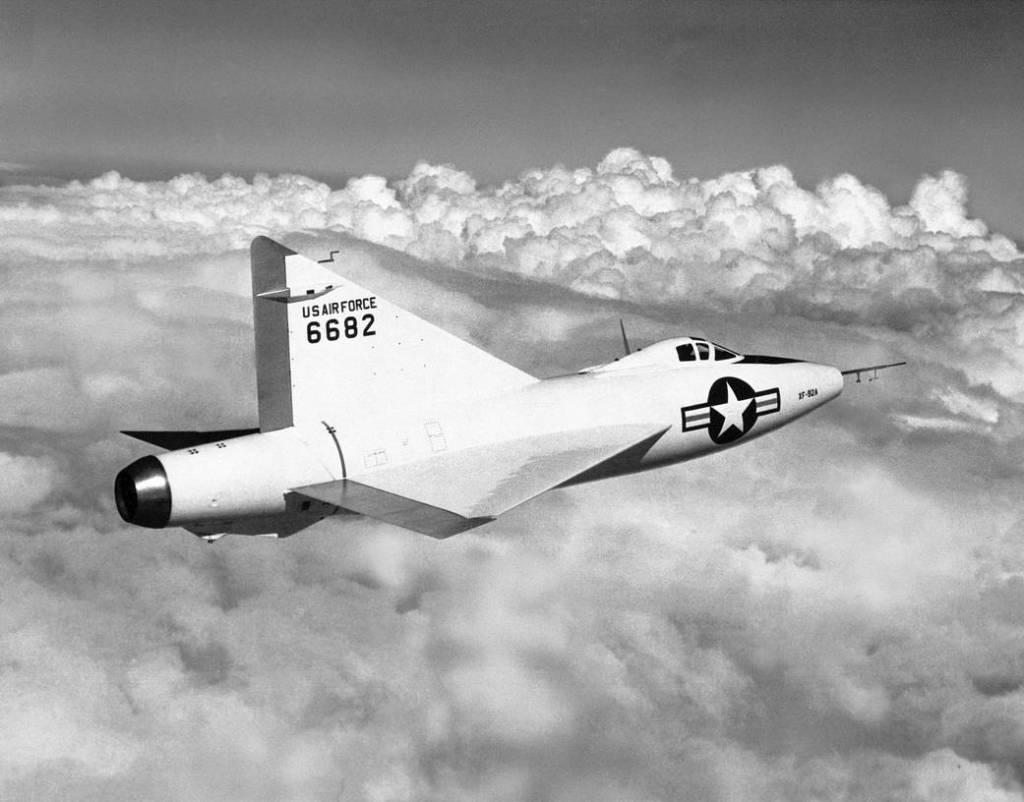
XF-92A Delta-Wing Aircraft
The XF-92A flew 325 NACA flights between 1948 and 1953. Other flights were flown by Convair and the Air Force. This joint program between the NACA, the Air Force, and Convair tested the country's first delta-wing aircraft. Stability and control, pitch-up, and lift-over-drag measurements obtained from this program contributed to the technology used to develop the F-102, F-106, XF2Y-1 Sea Dart, and B-58 aircraft.
Pushing the Edge of the Possible: NASA X-Planes in Flight
At NASA Armstrong, the X-1 was the first in a long line of research aircraft that helped shape our culture of innovation and discovery. Our high-speed, high-altitude flight campaigns have explored everything from thermal conditions and structural integrity to control, maneuverability, and human physiology – all essential to the advancement of aviation and spaceflight.
Watch the Video



























